EXPLORE
TRAVEL & TOURISM

• Employability skills
• Authentic tasks
• Culture & Civic Education
• INVALSI
Il piacere di apprendere
Alison Smith
TRAVEL & TOURISM

• Employability skills
• Authentic tasks
• Culture & Civic Education
• INVALSI
Il piacere di apprendere
Alison SmithIl piacere di apprendere
‘Do not follow where the path may lead. Go instead where there is no path and leave a trail.’
Ralph WaldoEmerson
AlisonSECTION A
The world of Tourism
1 The Tourism Industry
p. 10
2 marketing and promotion p. 46
• The nature of tourism
• A short history of tourism
• The world tourist industry today
• The economic impact of tourism
• The social and environmental impact of tourism
- ‘The Transformation of Maya Beach’
• The role of marketing
• Market segmentation
• The marketing mix
• SWOT analysis
3 working in tourism p. 74
• Choosing a job
• Working as a guide
• Working in a Tourist Information Centre
• Working in a travel agency
• Working in a hotel
• Working in a resort
• Working for an airline
• Working for a cruise company
CASE STUDY: Promoting a web business p. 104
4 motivations and destinations p. 108
SECTION B
Destinations and services
5 transport p. 144
Why people travel
• Business tourism
• Mass tourism vs niche tourism
• Nature and rural tourism
• Adventure tourism
• Weddings and honeymoons
• Food tourism
• Medical and wellness tourism
• Music and screen tourism
• Religious tourism
• Before you travel
- Identity documents
- Insurance
- Health
- Money
Air transport
• Airlines and flights
• Flight classes
• Tickets
• The airport
• International departure and arrival procedures

6 accommodation p. 184
• Choosing accommodation Serviced accommodation
• Hotels
• Facilities and amenities
• Technology in hotels
- ‘Smart Technology’
• B&Bs and guest houses
• Accommodation ratings
CASE STUDY: Helping a hotel in difficulty p. 228

• Organisations for the promotion of tourism
• Organisations for selling tourism products
• The effect of ICT and the Internet on the tourism industry
• Package holidays
• Life cycle of tourist destinations
• Market research
• Analysing data
• Promotional methods
• Digital promotion
- ‘Marketing on TikTok’
• Working in marketing
• Working as an event planner
• Working as a travel photographer or writer
• The future of tourism jobs:
- ‘The World Hotel Industry’s Ongoing Recovery’

Where people travel
• Natural resources
• Man-made resources
• Climate
• ‘Tourism Trends in the 2020s’

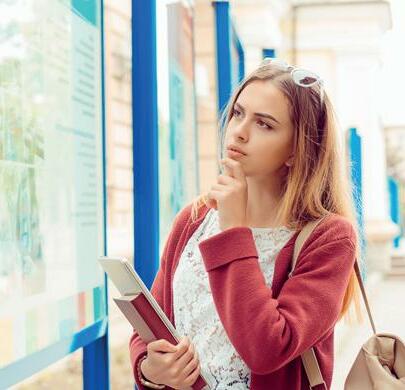

Land transport
• Travelling by train
• Travelling by coach and bus
• Travelling by car
Water transport
• Ferries and water buses
• Private hire
• Cruises
• On board a cruise ship
Self-catering accommodation
• Holiday rentals
• Youth hostels and residences
• Camping and glamping
• Written communication in tourism:
- Emails
- Formal letters
- Faxes and electronic faxes
- Forms
• Oral communication in tourism:
- Telephone calls
GRAMMAR Indirect questions
- Voicemail
- Face-to-face communication
• Visual communication in tourism
• Travelling and travellers
• The words journey, travel, trip and tour
• ‘Are Tourists Still Doing the Grand Tour?’
VIDEO ROLE PLAY In a tourist information office
• Adverts VIDEO
• Leaflets and brochures
GRAMMAR Modifiers and order of adjectives
• Websites
• Looking for a job
• Writing a CV
- Example of a CV
- Europass CV
- Writing a personal profile
• Circular letters and newsletters
• Promotional phone calls
• Promotion at a fair VIDEO
• Marketing and advertising
• ‘I came, I saw, I influenced’
VIDEO ROLE PLAY At a trade fair
GRAMMAR Past simple and Present perfect
- Other forms of CV VIDEO
• Writing a covering letter
• Preparing for an interview VIDEO
• Applying for a job
• ‘The Gig Economy and Tourism’
VIDEO ROLE PLAY A job interview
• The 2030 Agenda
• Sustainable tourism
• The digital world
• Smartphones rules
• What are human rigts?
• Migrants’ rights
- Why do people migrate?
- Migration data
• Women’s rights
• Gender equality
• Presenting a destination
• Writing descriptive texts for a destination
GRAMMAR The definite article with place names
• Presenting a transport company
GRAMMAR Relative clauses
• Enquiries and replies
GRAMMAR Prepositions of time
• Bookings and confirmations
- Booking methods
- Booking a flight online
- Bookings and confirmations by email
- Bookings and confirmations on the phone and in person
• Presenting accommodation
• Writing descriptive texts for accommodation
GRAMMAR The passive
• Enquiries and replies
• Bookings and confirmations
GRAMMAR The infinitive
• Enquiries and replies
Written enquiries and replies
Phone enquiries and replies
• Giving advice
GRAMMAR The verbs suggest and recommend
• Changes and cancellations
• While travelling
- Check-in at the airport
- On board the plane
- At the station
• Complaints and replies
• Natural resources
• Man-made resources
• ‘Workcations’
VIDEO ROLE PLAY At a hotel
• UNESCO World Heritage Sites
- The list
- The danger list
- The biggest threat
- The intangible list
• Climate action
- ‘Melting Snow, Glaciers and Ice Caps’
• Modifications and cancellations
• Check-in and check-out VIDEO
• During a stay
GRAMMAR Use of will
• Dealing with complaints
• Complaints and reviews on social media and travel websites
• Air transport
• Land transport
• Water transport
• Travelling
• ‘On Your Bike’
VIDEO ROLE PLAY
Purchasing a rail ticket
• Clean and affordable energy
- ‘Are E-scooters the Way Forward?’
• Sustainable cities and communities
- ‘European Green Capital Award’
• Hotels
• Holiday rentals
• Camping
• ‘The Importance of Customer Satisfaction and Guest Experience’
VIDEO ROLE PLAY
At a holiday resort
• Decent work and economic growth
- ‘Community Tourism’
• Responsible production and consumption
SECTION C exploring countries
7 explore italy p. 232
• Geography
• Political system
• A brief history of Italy

• Key moments in the 20th and 21st centuries
• SURVIVAL GUIDE FOR TOURISTS
8 explore the british isles p. 272

• Geography
• A brief history of the UK
• Key moments in the 20th and 21st centuries
• SURVIVAL GUIDE FOR TOURISTS
Around England
• The coast
• Village life
• City life
9 explore the usa p. 312
• Geography
• A brief history of the USA
Around Italy
• The coast
• Mountains
• Lakes
• Rome
• Industrial heritage
• National parks
• London
VIDEO The Shard
• TFL – Transport for London
Around Wales
• The capital
• The coast
• Action and adventure
• Key moments in the 20th and 21st centuries
• SURVIVAL GUIDE FOR TOURISTS
ESW
CLIL
• Cities of art - Venice - Milan - Florence - Lecce


Around Scotland
• The capital
• Royal history
• Lochs
Around Ireland
• Belfast
• Dublin
• Abbeys and monasteries
• Prehistoric remains
Around the USA
• The coast
• National parks
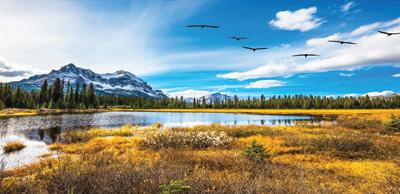
• Washington DC

• Other major cities
- New York City
- San Francisco
VIDEO The Golden Gate Bridge
• Entertainment
canada p. 352
• A city break and safari in South Africa


• A rail and coach trip across the Canadian Rockies south africa p. 354
architecture p. 360
• Prehistoric architecture
• Greek architecture
- Greek temples
• Roman architecture
- Types of buildings
- Domestic architecture
• Roman heritage in Britain
- London
• Gothic architecture
- Gothic churches
• English Gothic cathedrals:
London’s
Westminster Abbey
• Norman
architecture in England
• Half-timbered houses in the UK

• Renaissance and Classicism
• Baroque
• Gothic revival and Neoclassicism
- Gothic revival
VIDEO Tower Bridge
- Bath
- Hadrian’s Wall
• Paleo-Christian architecture
• Romanesque architecture
• Renaissance
• Baroque
- The White Tower
VIDEO The Tower of London
- Dover Castle
- Windsor Castle
• Post-Impressionism

• Early Modernism
- Neoclassicism painting p. 378
• Romanticism
• Impressionism
• Pop Art INVALSI TRAINING p. 390
PCTO p. 400
• Planning an itinerary – A practical guide
• Itinerary 1 – A walking tour in Rome
• Itinerary 2 – Day trips from Rome
GRAMMAR Quantifiers
• Itinerary 3 – A personalised fly-drive holiday in Sicily
• Itinerary 4 – An independent tour of central Italy
• Itinerary 1 – A coach tour in southern England
GRAMMAR The -ing form
• Itinerary 2 – A walking tour in London
• Itinerary 3 – A tour of Scottish islands
• Itinerary 4 – A themed tour in Wales
• Itinerary 5 – A coach tour in Ireland
• Guided itinerary
• More practice itineraries
• How to present a church
VIDEO The Basilica of St Francis of Assisi
- Churches/Cathedrals
• How to present a painting
VIDEO The Scrovegni Chapel, Padua
- Paintings
• Guided itinerary
• More practice itineraries
• How to present a museum
VIDEO The British Museum, London
- Museums
• How to present a castle
VIDEO Bodiam Castle in the south of England
- Castles
• Itinerary 1 – A tour of a New York borough
GRAMMAR First conditional
• Itinerary 2 – A fly-drive holiday on the East Coast
• Itinerary 3 – A river cruise on the Mississippi
• Itinerary 4 – Two package holidays in national parks
GRAMMAR Intensifying comparatives and superlatives
india p. 356
australia p. 358
sculpture p. 382
• Guided itinerary
• More practice itineraries
literature p. 384
TOURISM PHRASEOLOGY p. 402
• How to present a national park

VIDEO Denali National Park, Alaska
- National parks
• How to present a theme park
VIDEO Universal Orlando Resort, Florida
- Amusement parks
• ‘Sensory Sightseeing in Sciacca’s Open-Air Museum’
VIDEO ROLE PLAY
Booking a holiday
• The European Union
- A brief history of the EU
- EU insitutions
• Issues facing the EU
• EU youth volunteer opportunities
• ‘Clovelly, a Village With a Difference’
VIDEO ROLE PLAY
At a tourist office in London
• ‘The Southern Charm of Charleston’
VIDEO ROLE PLAY
Booking a guided tour of New York
• The UK political system
- Parliament
- The Constitution
- Devolution
- The UK Government and Prime Minister
- Political parties
• The US political system
- The Constitution
- The US Government
• The United Nations
- Quick facts
- UN system
• A package tour to the Golden Triangle and Goa
VIDEO The Taj Mahal

• A multi-destination holiday in Australia
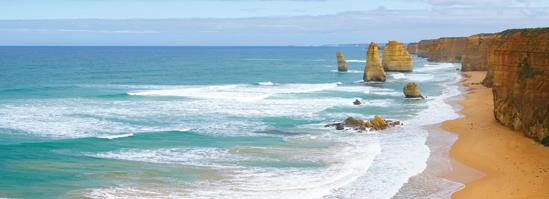
VIDEO The Sydney Opera House
• Romanesque
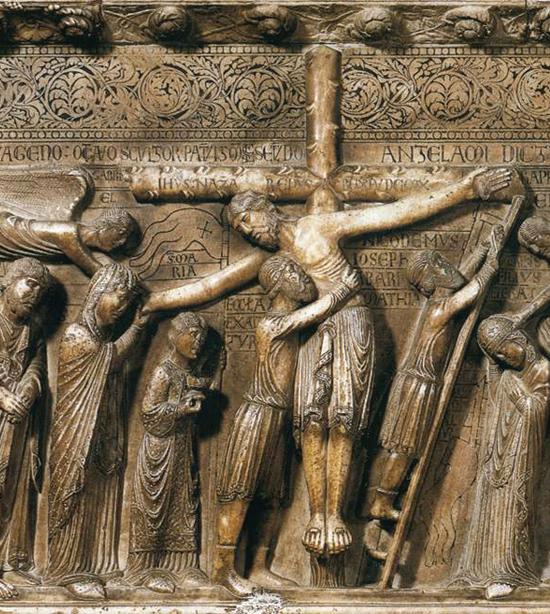
• Gothic
• Renaissance
• Baroque
• Neoclassicism
• The beauty of nature: Sunset in Venice, George Byron
• The interior experience: To The Lighthouse, Virginia Woolf
• The American ‘way’: On the Road, Jack Kerouac
VIDEO Jack Kerouac















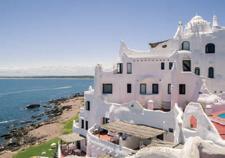
EXPLORE PREMIUM – TRAVEL & TOURISM è il nuovo corso di inglese rivolto agli studenti degli Istituti Tecnici, Settore Economico, Indirizzo Turismo.

Il volume si articola in 9 unità suddivise in 3 sezioni principali, organizzate in questo modo:

La sezione THEORY presenta testi teorici che affrontano i temi turistici con testi descrittivi, documenti, video autentici, mappe concettuali, attività per lo sviluppo delle abilità linguistiche e compiti di realtà.


La sezione Explore language offre un approfondimento del lessico specialistico attraverso mappe, tavole illustrate e attività.
La sezione PRACTICE mostra esempi completi della comunicazione turistica scritta e orale, attraverso esercizi incentrati sulle funzioni comunicative per lo sviluppo delle competenze professionali e delle employability skills, box con approfondimenti grammaticali, video con simulazioni di situazioni professionali, video tutorial di grammatica e compiti di realtà.
Puoi scaricare gratuitamente dal sito www.gruppoeli. i seguenti materiali: materiale didattico supplementare | tutti gli audio in formato MP3 | il FLIP BOOK
Al termine di ogni unità sono presenti percorsi di Educazione civica e di analisi degli obiettivi dell’Agenda 2030.
Threats to tourism



Scheda di approfondimento online


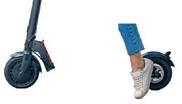









Rimando a un argomento correlato nel volume
Attività per la preparazione all’esame
Cambridge English: B1

Preliminary e B2 First

La sezione HIGHLIGHTS illustra la geografia, il sistema politico, la storia e le principali città o regioni di Italia, Isole Britanniche, Stati Uniti e offre una guida pratica di viaggio per ogni destinazione.

La sezione Professional competences propone video e tavole illustrate che permettono di mettere in pratica in modo autonomo e all’interno di un contesto lavorativo autentico simulato quanto appreso nell’unità.

Ampio spazio dedicato alle competenze trasversali: storia dell’architettura, della pittura e della scultura e brani di letteratura con proposte per la creazione di itinerari.


Il FLIP BOOK è la versione digitale interattiva del tuo libro di testo. Puoi scaricarlo sul tuo computer o tablet utilizzando il codice che trovi all’interno della copertina.
Inoltre puoi utilizzare la App EliLink per ascoltare gli audio, guardare i video e fare gli esercizi comodamente sul tuo smartphone.
Che cosa c'è nel FLIP BOOK?
• esercizi interattivi e auto-correttivi e audio degli esercizi di ascolto
• diverse tipologie di video con opzione sottotitoli

• mappe grammaticali interattive con audio e esercizi extra
• FLIPPED CLASSROOM con video, mappe interattive ed esplorabili, photo galleries sulle principali attrazioni turistiche
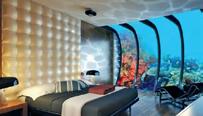












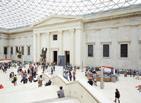
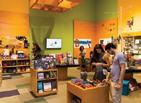
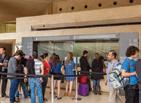
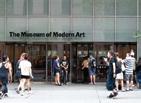



• video tutorials di grammatica


• lezioni grammaticali in PPT

• libro liquido, dove potrai modificare lo sfondo e il carattere del libro digitale, e ascoltare la lettura dell’intero volume
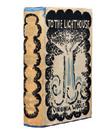
• accesso diretto alle schede di approfondimento

• tavola interattiva con audio dei simboli fonetici




Due test completi di preparazione alla Prova INVALSI con attività di reading, listening e language in use suddivise per livello (B1-B2).
video role play
mappa esplorabile
La sezione ITINERARIES presenta numerose proposte di itinerari e attività che guidano gradualmente gli studenti a sviluppare dei progetti turistici.
UNITS
the tourism Industry
p. 10 1 marketing and promotion
p. 46 2 working in tourism
p. 74 3
Getting to know:
∞ the nature of tourism
∞ the tourism industry and its impacts

∞ tourism organisations
∞ the role of marketing and market research
∞ promotional methods
∞ job opportunities in tourism
Learning:
∞ to write emails and letters
∞ to make phone calls
∞ to communicate face-to-face
∞ to write adverts and leaflets
∞ to write circular letters
∞ to write a CV and covering letter
Promoting a web business, page 104
∞ The 2030 Agenda
∞ Sustainable tourism
∞ The digital world
∞
Smartphone rules
∞ What are human rights?
∞
Migrants’ rights
∞
Women’s rights
∞
Gender equality
1 What qualities and characteristics do you need if you work in contact with the public?

2 Watch this video of a conversation in a tourist information office in Dublin and decide whether these sentences are true (T) or false (F).
1 The traveller has only just arrived in Dublin.
2 He is worried about getting lost.
3 The day trip he is interested in only takes place in the summer.
4 The tourist guide offers him two alternative trips.

5 She explains how to reach the destination by public transport.
6 The journey will take about 45 minutes.
3 Go online and find out where your nearest Tourist Information Centre is. When is it open and what kind of information can tourists and visitors get there? Make some notes so you can share your findings with the class.
Discipline turistiche e aziendali
• Prodotti turistici a catalogo e a domanda.
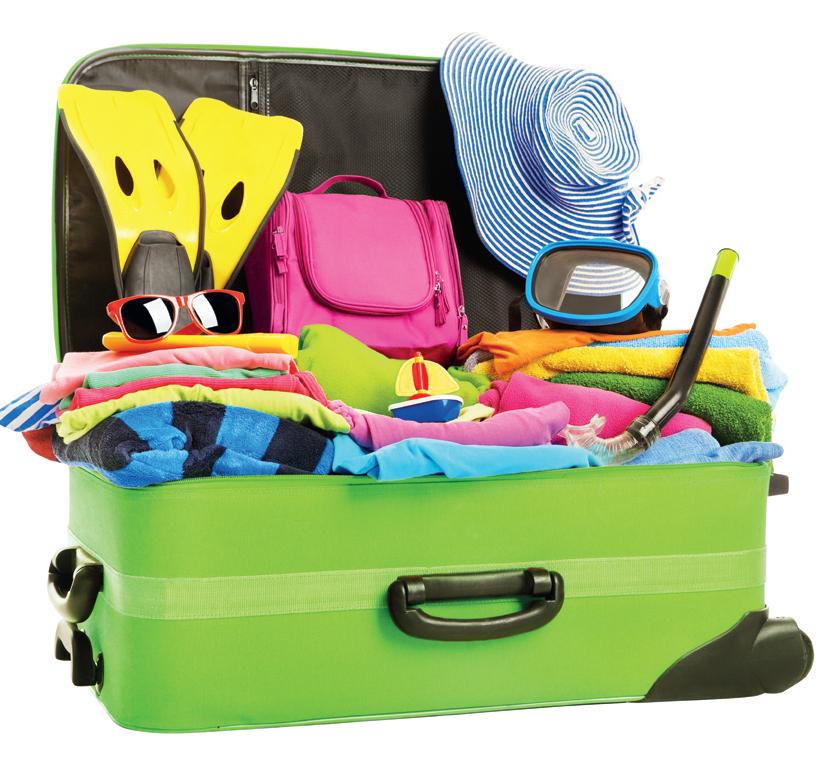
• Strumenti di comunicazione interpersonale nei diversi contesti aziendali.
• Marketing turistico operativo e strategico.
Diritto e legislazione turistica Compiti e funzioni delle istituzioni locali, nazionali e internazionali nei rapporti con le imprese turistiche.
Geografia turistica
• Evoluzione storica dei viaggi.
• La tradizione del Grand Tour.
• Globalizzazione e sviluppo sostenibile.
1 When was the last time you travelled out of your town/ city, region or country? Why did you travel?
Do you think you were a tourist on these occasions?

What type of tourism are the examples in the opening paragraph?
Going on a week’s holiday to Sardinia with your family? Visiting your relatives for a few days in another city? Going on a school trip to Brighton to study English? Taking part in a two-day medical conference in another country? Flying to New York for the weekend for some shopping? Which of these actions can be classified as those of a tourist? Well, according to UNWTO (the United Nations World Tourism Organization whose objective is the promotion of responsible, sustainable and universally accessible tourism worldwide), all the people doing the above things can be defined as tourists.
A visitor is a traveler taking a trip to a main destination outside his/her usual environment, for less than a year, for any main purpose (business, leisure or other personal purpose) than to be employed. A visitor is classified as a tourist if his/her trip includes an overnight stay, or as a same-day visitor otherwise.
So, in other words, tourism refers to the temporary movement of people to destinations away from where they live or work and, as a consequence, the activities they do and the services they use in these places. Looking at where the journey takes place, we can find the following standard classification.
when the trip or holiday takes place within a person’s country of residence
when the trip or holiday involves another country
outbound tourism
a person travelling out of their country of residence

inbound tourism
a person entering a country which is not their country of residence.
Then we can consider the motivations for travelling. People travel for many reasons and the most common sub-divisions are:
LEISURE This is what most people think of with the word tourism, and it basically refers to travelling for pleasure and enjoyment, whatever the length of the stay. It includes holidays for recreational activities, sports, or shopping; educational, cultural and religious trips; health and wellness breaks and so on.
BUSINESS People who travel for work-related purposes, for example to conferences, exhibitions, trade fairs and meetings. It is likely that their employer will pay for all or most of the trip, so business travellers may spend more on transport and accommodation.
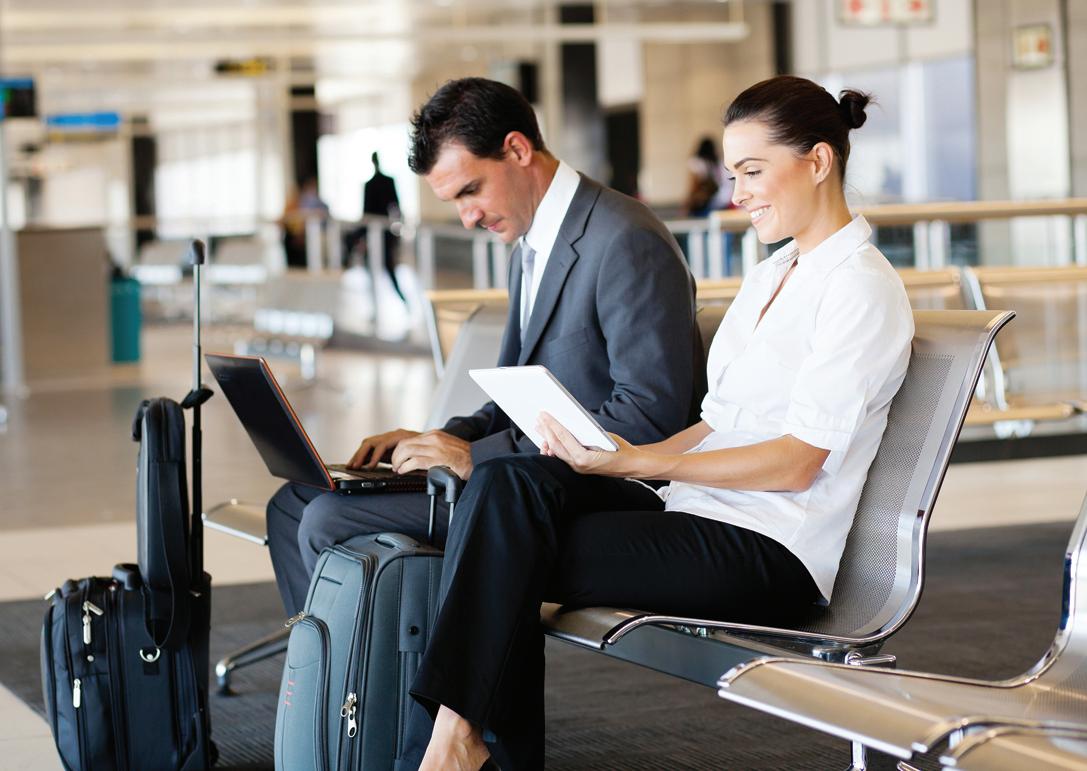
VISITING FRIENDS AND RELATIVES (VFR)
Given that many people migrate to other countries, this form of international travel is extremely common particularly during holiday and festival periods when they return to their home country. Although they probably will not spend on accommodation, VFR tourists are likely to spend on other services and activities, such as transport, food and local attractions.
2 Read the texts on pages 10 and 11 and decide whether these statements are true (T) or false (F). Correct the false ones.
1 A person travelling for business cannot be considered a tourist.
2 According to the UNWTO definition, a tourist is someone who spends at least one night in a different destination.
3 An Italian family from Rome who goes on holiday to Sicily is an example of domestic tourism.
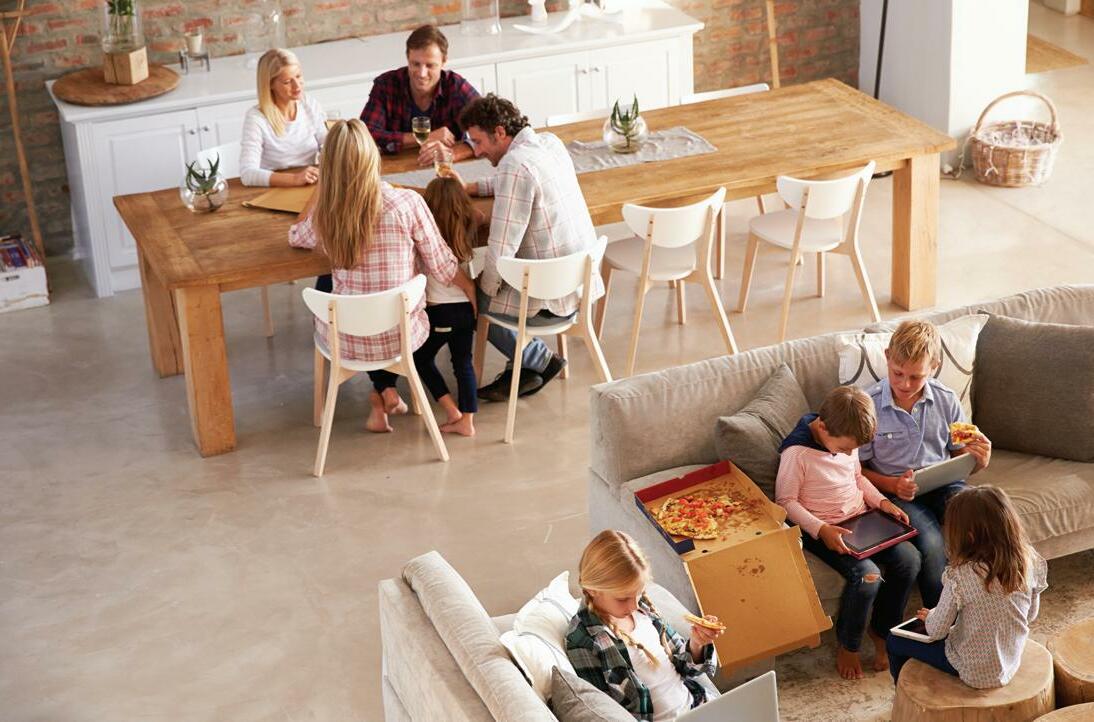
4 A US citizen who goes on holiday to London is an example of outbound tourism for the UK.
5 People who travel for leisure purposes spend more money than those travelling for business.
6 It is unlikely that VFR tourists spend money on accommodation.
3 Complete the mind map on the FLIP BOOK with details from the text.
4 Find the English equivalents in the text for these expressions.
1 parenti
2 gita scolastica
3 ambiente
SPEAKING
4 scopo
5 tempo libero
6 piacere, divertimento
5 COMMUNICATION In pairs, talk about what kind of tourism you and your family have been part of.

1 In pairs, discuss how you think tourism has changed over the centuries.
The word ‘tourist’ appeared at the end of the 18th century but tourism had existed long before this.
THE ROMANS AND GREEKS travelled in order to expand their empires and to trade, but their wealthy citizens also travelled for educational, cultural and recreational reasons. They visited important historical sites, including the seven wonders of the ancient world; they travelled to take part in sporting or musical competitions; they relaxed in towns and resorts by the sea or at hot springs and thermal baths. The huge road network built by the Romans enabled them to travel with relative ease, but with the decline of the Roman Empire, this network began to deteriorate.
During THE MIDDLE AGES travel was full of dangers, such as bandits and robbers on the roads ready to attack travellers for their money. Despite these risks, and the cost and time involved in undertaking a journey, the Middle Ages and particularly THE RENAISSANCE were periods of great travel. The reasons for these difficult and often dangerous journeys were primarily exploration and trade.
In these periods, people also went on religious pilgrimages to visit holy shrines and needed services like change of transport, food and accommodation during these trips, just like tourists today.

In THE 18TH CENTURY , members of the British aristocracy and upper classes took part in the Grand Tour. This was a tour, lasting anywhere between one and three years, of the most important cities in Europe, especially in France and Italy, although some included Germany, Spain and Greece. It was undertaken by young men, accompanied by a guardian or tutor, and was intended to enrich their culture and complete their education. Later, it also became fashionable for rich young women to tour Europe in a similar way. They were always accompanied by a chaperone, an older lady who had to ensure their safety and protect their physical and moral reputation.

2 Read the texts on pages 12 and 13 and answer these questions.
1 Who could be considered to be the first tourists? Why?
2 What were the difficulties of travelling in the Middle Ages?
3 What were the most common reasons for travel in the Middle Ages and Renaissance?
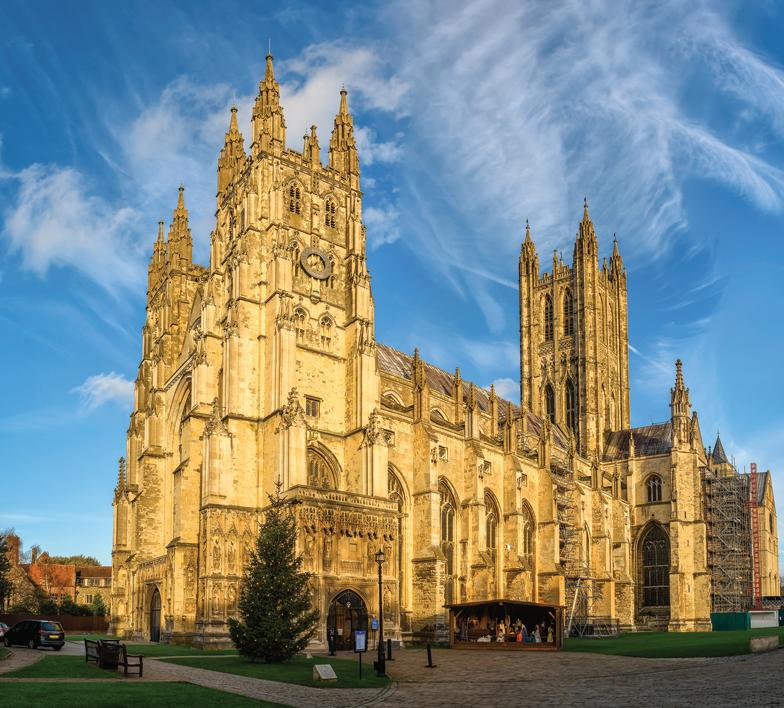
4 Who took part in the Grand Tour? Why do you think it was only for these people?
5 How did developments in transport change the concept of travel and tourism?
6 In the past, how was the question of wealth connected to the possibility of travel? And today?
3 Complete the mind map on the FLIP BOOK with details from the text.
THE INDUSTRIAL REVOLUTION saw the rise of the affluent, middle classes in England and short breaks for health reasons at spas and seaside towns in Europe became popular. The development of faster and better transport systems – steamships and trains –meant travel became quicker and more accessible to the average person and tourism was reserved less and less for only the wealthy. Travel for leisure purposes began to take hold: for example, in the early 1900s many British families were able to take day trips by train to the seaside from the big cities. With the introduction of paid holidays for workers and, later, the mass ownership of cars, people were able to travel easily and could have a short, cheap holiday by the sea, staying in places like holiday camps or caravan parks which offered simple accommodation, food and entertainment.
Poster produced for London & North Eastern Railway (LNER) to promote rail travel to Bridlington

International travel suddenly became more widespread in THE 1970s with jumbo jets which were able to transport large numbers of people quickly and safely to far-flung parts of the world. People started to have more paid holidays and tour operators were able to offer relatively cheap package holidays to destinations with better weather and more sunshine or to exotic locations, which had been out of the reach of most people until then. The consolidation of international mass tourism – standard products for large numbers of people going to the same destination during the same period – had begun.

4 Find the adjective forms in the texts for these nouns.
5 Find the words in the texts for these definitions.
1 : to get worse
2 : something bad that could happen
3 : the buying and selling of goods
4 : an increase
5 : events, performances, activities etc. to amuse people
6 : extensive, common, widely diffused
Thomas Cook was probably the first tour operator, back in the 19th century. He started by organising day trips by train in England, and then moved on to the rest of the UK. In 1855 he took his first tourists to Belgium, Germany and France. His tours soon expanded to include Switzerland and Italy, and then an eight-month round-the-world trip in 1872. The company he set up with his son later became one of the biggest tour operators in the world. However in 2019 Thomas Cook Group plc went into compulsory liquidation and the name and logo were bought by a Chinese conglomerate which sells flights and hotel packages.

steamships battelli a vapore take hold prendere piede ownership possesso far-flung remote
6 PRESENTING Which Italian cities were usually included in the Grand Tour? Why? Was your town/city part of the tour? Find out and prepare a short oral report on the most popular places in Italy for foreign tourists at that time.
1 Do you think the tourism industry is currently growing and is this growth likely to continue in the future?
Tourism really took off in the second half of the 20th century and continued to grow, almost without interruption, from the 1950s onwards. The reasons for the continued growth can be attributed to the following factors:

• More and more destinations opened up to tourism and investments in infrastructure and tourism facilities (roads, airports, hotels etc.) increased.
Travel became easier and cheaper. Competition in the market increased, with travel agents offering deals and packages from many different tour operators. Low-cost airlines, such as Ryanair and easyJet which became hugely successful in the 1990s, opened the market for tourists on a budget and also for lesser-known destinations, such as those in Eastern Europe. The Internet has contributed to this increased competition, with online travel agencies for example, and has allowed tourists to organise all aspects of a holiday independently.
TV, the Internet and other media stimulate people’s interest, knowledge and understanding of other countries and therefore they wish to experience them first hand. People have more leisure time, more disposable income and there is a trend to have more than one holiday a year. The ageing population means that more retired people have time to spend travelling.
• Threats to tourism
• Accessible tourism
This positive trend, however, came to an abrupt halt in 2020 when the Covid-19 pandemic hit the world. National lockdowns, restrictions and quarantine measures meant that travel and tourism, both domestically and internationally, were almost completely interrupted, making 2020 the worst year on record. All segments of the tourism and hospitality industry – hotels, airlines, cruises, restaurants, travel agents, tour operators and so on – were badly affected and many of the large global events tourism thrives on, such as the Tokyo Olympics and the Cannes Film Festival, were cancelled or postponed. Thousands of employees were furloughed or lost their jobs and many companies went out of business. Since then the industry has picked up and has shown a steady recovery towards pre-pandemic levels.
2 INVALSI Match the two halves of the sentences. There are two extra endings that you don’t need.
1 The growth of the tourism industry has
2 Increased competition in the industry has led
3 The Internet allows holidaymakers


4 People are inspired
5 Domestic and international tourism
6 Effects of the pandemic on the industry
a had positive results in all areas of the industry.
b were badly affected by the Covid-19 pandemic.
c to more destinations and lower prices.
d had almost no interruptions since the 1950s.
e invested in more infrastructure for tourists.
f to visit places they see on TV or the Internet.
g to plan and buy holidays autonomously.
h included job losses and company closures.
3 Go to UNWTO.org and find out the figures for tourism last year. How do the figures differ in the various regions? How do they compare to the pre-pandemic period?
1 In pairs, write down the first six businesses or industries you can think of that are connected to the tourism sector. Now look at the pyramid and check your answers.
ACCOMMODATION, CATERING, ENTERTAINMENT, TRANSPORTATION

Travel and tourism is a key contributor to the economic progress of a country through the creation of jobs and businesses, the stimulation of capital investment and the development of infrastructure. Many Least Developed Countries (LDCs) and Small Island Developing States (SIDS) are tourism-dependent economies, where tourism can contribute up to 40% of the Gross Domestic Product (GDP) and is a vital source of foreign currency. The economic impact of the tourism industry goes well beyond the direct expenditure on tourism products in the core hospitality and transportation sectors (hotels, restaurants, airlines and so on) to include the indirect effects on other sectors like agriculture, construction, engineering, real estate development, food production, consumer goods and retail, to name only a few. Take the example of a couple going on a cruise. Purchasing the cruise package directly benefits the cruise company, and the travel agent, if any, who made the booking. Going on a trip around one of the destinations, eating in a local restaurant and buying a souvenir is a source of income for several local shops and restaurants. But the impact does not stop here, as many other sectors are involved in the tourism supply chain before and during the couple’s two-week cruise: construction and engineering, for example, to build and design the ship; furniture production and retail to furnish the ship; agriculture and food processing to grow and produce the food prepared and consumed on board, advertising and PR for marketing and selling the cruise.
LOOK CLOSER
In macro-economic
by
TOURISM PROMOTION, TRANSPORTATION ADMINISTRATION, RENTAL CAR MANUFACTURING, SHIPBUILDING, AIRCRAFT MANUFACTURING, FURNISHINGS AND EQUIPMENT SUPPLIERS, FINANCIAL SERVICES, SANITATION SERVICES, PRINTING/PUBLISHING
Gross Domestic Product (GDP) Prodotto Interno Lordo (PIL) real estate beni immobili supply chain filiera
FOOD & BEVERAGE SUPPLY, RETAILERS, MANUFACTURERS, HOUSING, BUSINESS SERVICES, PERSONAL SERVICES
2 Read the text and decide whether these statements are true (T) or false (F). Correct the false ones. T F
1 Higher employment is not one of the benefits of the tourism industry.
2 Tourism can provide countries with much needed foreign currency.
3 Money spent on hotels, restaurants and flights is considered direct expenditure.
4 The term ‘indirect effects’ refers to the extra money spent by tourists after paying for accommodation and transport.
5 The example of the cruise is used to show how much extra money tourists spend while on holiday.
6 The tourism supply chain is all the industries and businesses involved, directly and indirectly, in creating a tourism product.
3 Find the words in the text for these definitions.
We have seen that tourism is vital for a country’s economy which is why many LDCs and SIDS are keen to develop the sector in order to be able to increase investments in the country and improve all aspects of the quality of life. However, it is important to note that growing numbers of tourists can bring many drawbacks.
Foreign currency can be invested in education, health and other services, Jobs are created and people can learn new skills,
Local infrastructure is improved,
profits go to foreign companies, such as tour operators and hotel chains, and not the local community.
international companies employ foreign workers, leaving the locals to do only unskilled and badly-paid work, which is often seasonal.
these improvements are not where the locals need them and local projects might even be stopped in favour of developments aimed at tourists. There is also an increase in traffic and congestion.
New facilities and structures are built, using the local workforce,
BUT OFTEN
this leads to an increase in local house prices as developers and investors buy up land. New resorts and hotels can also be badly planned and they cause the destruction of natural landscapes, an increase in pollution and the overconsumption of precious resources, like water.
Tourists can meet and support local people and businesses,
Tourists can learn about and appreciate the country’s natural and cultural heritage,

1 Read the text and the table and answer these questions.
tourists remain in the resort, particularly with all-inclusive packages, and have little contact with locals.
these environments are under threat from too many visitors, with damage, erosion, litter and pollution.
1 What financial problems can be caused by foreign companies operating hotels and resorts in a country?
2 How can local people’s lives be improved by tourism?
3 And how can they be made worse?
4 What are the environmental risks of tourism?
2 CRITICAL THINKING Discuss these questions in small groups.
1 Which is the most important benefit of tourism?
2 Which disadvantage is the most serious?
3 Can you think of any other pros and cons?
4 How can the negative effects of tourism be controlled or eliminated?
5 In your opinion, is tourism overall more positive or more negative for an LDC or SIDS?
6 Do you think it is only LDCs and SIDS which are negatively affected by tourism?
Jostling for a space on the sand, the idyllic view blocked by dozens of boats and crowds of people – not what you expect or want when visiting one of the world’s most beautiful beaches. But this used to be the reality at Thailand’s Maya Bay, situated on the uninhabited island of Phi Phi Leh and made famous by the Leonardo Di Caprio film The Beach in 2000.
It was already quite a popular place for Thai tourists to visit, but soon after the film’s release up to eight thousand people, mostly foreigners, were visiting every day, the anchors of their speed boats destroying the coral, their sunscreen polluting the water and their rubbish littering the beach. In 2018 Thailand, which relies on tourism for about 20% of its GDP (prepandemic), made the controversial decision to close the bay. Environmentalists and marine scientists knew that it would be the only way to save its precious natural resources. The closure was intended to be temporary – enough time for rejuvenation projects like replanting coral – but with an extension and then the Covid-19 pandemic, the bay was actually closed for nearly 4 years. In that time, the coral started to grow, the number of lobsters and other fish increased and black-tipped sharks returned to the bay.
The beach opened to visitors at the beginning of 2022 with strict rules. Boats are no longer allowed to enter the bay and the number of visitors per day is restricted. Visitors are dropped off at a small jetty on the other side of the island and then reach the beach along a wooden boardwalk through the vegetation. Once there, their time is limited to an hour and no swimming or smoking are allowed. Local officials ensure that these rules are followed.
After eight months the beach was then closed again for two months to give nature a break and time to recover from the onslaught of visitors. This is likely to be a yearly occurrence to ensure that the investments and tremendous efforts put into the ecological projects are not a waste of time. A sustainable compromise seems to have been reached: tourists can still experience this piece of paradise, while nature is allowed to flourish.
3 Look at the two photos. In pairs, discuss what you can see and the differences between the two images.
4 INVALSI Read the article and answer the questions, using no more than 4 words. The first one (0) has been done for you.
0 Why wasn’t visiting Maya Bay a wonderful experience before? It was too crowded.
1 Who visited Maya Bay before 2000?
2 What problems did the large number of tourists cause? (2 answers)
3 How long was Maya Bay off-limits to the public?


4 How long can visitors spend on the beach now?
5 What can’t visitors do there?
6 Why did the authorities close the beach for a second time?
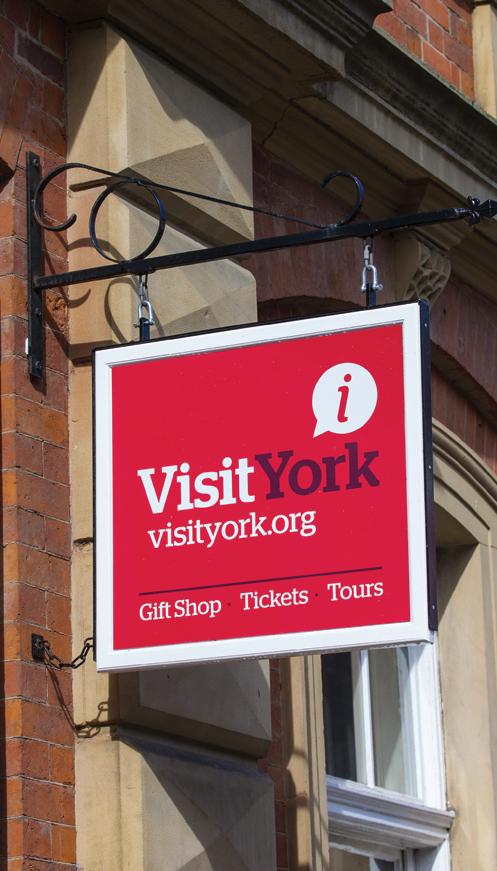
The tourism sector has a number of international, national, regional and local agencies and organisations working for the promotion of tourism.
The World Tourism Organization, UNWTO (www.unwto.org), as already mentioned, is the specialised United Nations agency whose objective is the promotion of responsible, sustainable and universally accessible tourism worldwide. It serves to promote the social and economic importance of tourism for the development of a country, while not forgetting the negative impact tourism can have, by producing research and educational material and offering technical support and assistance to individual countries.

In the UK, the national tourism agency, VISITBRITAIN (www.visitbritain.org), is a public body funded by the Department for Culture Media and Sport, which is responsible for promoting Britain across the world and for increasing inbound tourism to all parts of Britain. There are also partner agencies for each country within the UK (www.visitengland.com, www.visitscotland.com, www.visitwales.com, www.discovernorthernireland.com) and for the Republic of Ireland (www.ireland.com and www.discoverireland.ie).
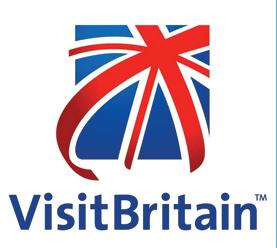
The Italian National Tourism Board, ENIT (Agenzia Nazionale del Turismo –www.enit.it/wwwenit/it/), is a public body which is active in promoting Italy as a tourist destination, both for the country as a whole and for each region. Through promotional and commercial strategies, consultations and collaboration with other public and private bodies, it aims to stimulate tourism in Italy, increase the promotion of products, develop the hospitality sector and provide information to visitors. Then, on a regional, provincial and local level, there are several different organisations. The APT (Azienda di Promozione Turistica) provides information for tourists regarding the area, itineraries and accommodation. The IAT (Informazioni e Accoglienza Turistica) also offers tourist information on a local area, including accommodation, food and what to do and see. A Pro Loco is a non-profit association, formed by volunteers, whose aim is to promote the culture, traditions and heritage of a place, often a small village or town, such as the local handicrafts, food, wine and traditional festivals.

The US website of the National Travel and Tourism Office (https://www.trade.gov/national-travel-and-tourism-office) is aimed at creating a positive climate for growth in US travel and tourism and enhancing the international competitiveness of the industry. The US government website (www.usa.gov/ recreation-and-travel) provides practical information to tourists regarding travelling around the country and recreational activities, as well as details on visas and the application process. Each of the fifty states and the District of Columbia has its own tourism website, while Welcome Centres or Visitor Centres can usually be found in major cities, at attractions and along important road routes into each state. Another source of information for tourists is www.visittheusa.com, run by Brand USA, a public-private marketing company.


1 Read the text on page 18 and say which organisation(s) mentioned in the text…
1 is non-profit?
2 is part of the United Nations?
3 is a public body?
4 produces research on the impact of tourism?
2 Match each organisation to the most appropriate slogan.
1 UNWTO
2 ENIT
3 a Pro Loco
4 VISIT BRITAIN
5 VISIT THE USA
B Handy tip # 11: Don’t forget we drive on the left!
D We strive to increase tourism’s contribution to poverty reduction.
5 provides information regarding accommodation?
6 covers promotion for four different countries?
7 is the smallest in its country?
8 is a mixed public and private company?
A Find out about the tradition of hat-making in our town at this two-day festival.
C Discover this immense land from coast to coast, like never before. Start planning your dream vacation today!
E Promoting the unified image of the tourist offer.
3 1 P Listen to this presentation of the organisation FAI and complete the sentences.
Name in English: (1) .
Its aim is the promotion and protection of Italy’s (2) It was founded in (3) . It has restored many (4) and opened them to the public. Educational activities include training as (5) As a FAI member you can enter all (6) free of charge.
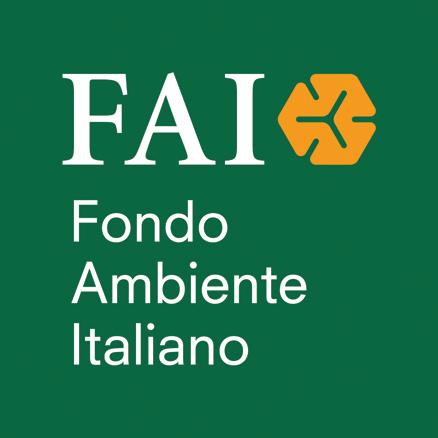
4 ORGANISING Go online and find out about the National Trust in the UK – www.nationaltrust.org.uk. Write a short report, presenting the main information of the organisation and comparing it with FAI (type of organisation, aims, membership, activities, links between the two etc.)
TEAMWORK PRESENTING Find the website of a Pro Loco in Italy; it can be one near where you live or from another region. Each member of the group has to look at one aspect of the site and then report back to the group. Together, you will then prepare and give an oral presentation to the rest of the class, using slides/pages from the site to illustrate your points.
• Information: How many different topics are covered? How up-to-date is the information?
• Languages: What languages are available? Is it well-written in the languages you understand?
• Graphics/Style: Is it attractive? Are there lots of photographs and images?
• Ease of use: Is it easy to use? How useful would it be for an Italian/foreign tourist? Are there useful links?
1 Which tour operators have you heard of?
in bulk in grande quantità deals offerte speciali rates tariffe
The four main components of the distribution chain for tourism products are: the primary providers of the travel products (hotels, airlines etc.), the wholesalers (tour operators), the retailers (travel agencies) and the final consumer.
PROVIDERS OF TRAVEL PRODUCTS tour operators travel agencies final customer
What else do you think travel agents should do or offer in order to remain competitive?
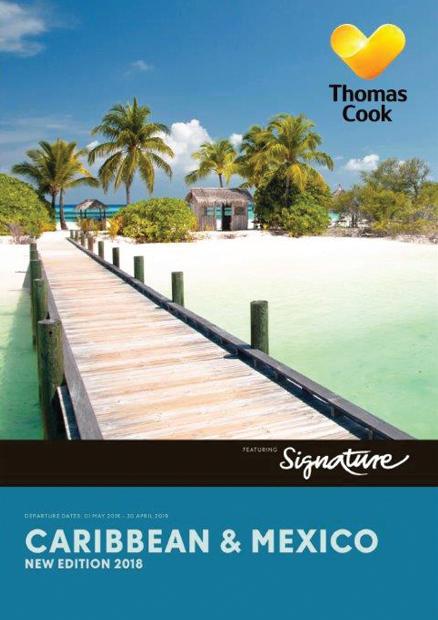
A TOUR OPERATOR is a business which combines two or more travel services offered by primary suppliers (accommodation, transport, meals etc.) and then sells them as a single product – a package holiday – for a fixed price. The tour operator buys the separate elements in bulk from various providers – airlines, ferries, hotels – negotiating the best deals and rates due to the high volume of business. Sometimes, tour operators might also directly own the companies which offer various parts of the package, such as a resort. An inbound tour operator offers packages aimed at overseas visitors coming to a destination, while an outbound tour operator is based in the tourist’s own country and produces package holidays to destinations overseas. Their operations can be aimed at the mass tourism market, a specific country or activity (e.g. the Caribbean or skiing), or they may offer specialised packages for specific segments of the market: luxury, ecotourism, over 50s and so on. These packages can be sold directly to the final consumer or through a travel agency.
TRAVEL AGENCIES are retailers for the tourist industry and they provide a wide range of services. As well as being an intermediary for promoting and selling package holidays on behalf of tour operators, they sell plane, rail and ferry tickets; they organise travel insurance, car rental, accommodation and excursions; they provide information on currencies, visa requirements and other general material and advice on destinations and travel. Travel agents usually receive a commission from the operator or company on the packages and tickets they sell. This is a percentage, which varies from provider to provider, of the total cost of the product. They may also charge customers a fee, either a fixed amount or a percentage, for some of their services. Travel agencies can vary in size, from multiples – agencies with many branches across a country – to miniples – smaller, independent travel agencies.
Due to the increase in the number of consumers making their own travel plans using the Internet, and therefore bypassing the intermediaries, it is vital for travel agents to give reliable, efficient and professional advice and information, helping create a personalised itinerary, with the most convenient routes and at the best possible value to ensure happy customers and repeat business.
2 Read the text and decide whether these sentences are true (T) or false (F). Correct the false ones.
1 Tour operators combine the different parts of a holiday into one single product.

2 Tour operators are able to get low prices because they book the services in advance.
3 Some tour operators specialise in offering package holidays for a particular market segment.
4 Both tour operators and travel agents sell package holidays.
5 Travel agencies only give advice about holidays and transport.
6 Being a travel agent requires a lot of knowledge about different aspects of the travel industry.
As in all areas of business and industry, companies in the tourism sector rely on the continual developments in ICT (Information and Communications Technology) in order to transform and improve their internal operations, to stay competitive and to find new ways to interact with customers. The 24/7 availability of internet-based services means a hotel can accept bookings from anywhere in the world at any time; an airline can have passengers check in online, saving the company time and money and making the process at the airport much more efficient; a tourist site can promote its attractions, provide information and sell entrance tickets.

The Internet of Things – any object that connects and exchanges data with other devices using the Internet – allows business to make their operations seamless and more efficient, for example by automatically switching off heating and air-conditioning in empty hotel rooms, or signaling when appliances are broken or need maintenance. It also allows much more personalisation of customer service, for example in a hotel, at an airport or a destination, with things like location-specific information.

Just as the companies and organisations operating in the tourism sector benefit from technology, so do travellers and tourists since they are able to access global services 24/7 from the comfort of their own home or while they are on the move. They can research and compare products, check timetables, look at maps, read reviews and see photographs before quickly and easily purchasing holidays, tickets, car rentals, hotel rooms and so on with instant confirmation.
Online Travel Agencies, such as Expedia.com, and comparison sites, like Kayak.com, are extremely successful. OTAs offer thousands of hotels, flights, car rentals and packages at competitive rates and you purchase directly on the site. Comparison sites, on the other hand, just allow the user to quickly compare prices and offers, but then direct you to the provider’s website to complete the purchase. Both kinds of site make a profit by charging commissions to the companies listed.
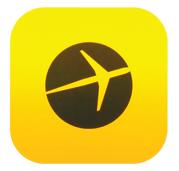


Another area which has had a huge impact on the tourism industry is social media. Consumers use social networking sites like TripAdvisor, Twitter and Facebook to research and share their personal experiences of a resort, a restaurant, an airline and so on. Similarly, companies can use these same platforms to promote themselves and to increase customer awareness and loyalty.
1 Read the text and answer these questions.
1 Why is ICT so important for companies in the tourism sector?
2 What benefits does the Internet of Things have for tourists and customers?

3 In what ways can a consumer use the Internet to help plan and book a holiday?
4 What is the main difference between an online travel agency and a comparison site?
5 Why have social networking sites had a big impact on the tourism industry?
6 In what ways do you think this impact can be positive and negative for a business?
2 Complete the mind map on the FLIP BOOK with details from the text.
3 Answer these questions in pairs.
1 What Italian tour operators do you know? Are they general or specialised in a particular country or type of holiday?

2 Are there any travel agencies in your town/city? Are they independent or part of a chain?


3 Have you or your family ever used an online travel agency? What for?

A charter flight is booked in advance by a tour operator, often for a specific season, and then the flights are sold to their customers as part of a package holiday, usually at a lower cost than that of a scheduled flight.

Gift experiences, sold by companies like Smartbox, are a way for a hotel, resort or restaurant to sell their services as a package. The person wishing to make a gift chooses a theme, while the recipient of the gift experience chooses their preference and the date from among those on offer and uses the voucher code to book.
The most common type of package holiday offered by a tour operator, designed for mass tourism, usually comprises the following elements:
• a return charter flight*;
• transfer to and from the airport to the hotel;
• accommodation for the duration of the holiday;
• some, or all, meals and drinks.
Additional components of a package may include the services of a representative, who is responsible for helping guests during the transfer and at the accommodation, and is on hand to give advice and recommendations. Entertainment, such as children’s clubs and shows, are often included, as are certain sports facilities and activities, especially in larger resorts or hotels. Sightseeing excursions and tours with a tour guide can be part of the package or purchased during the holiday. Insurance may be included in the fixed price or added as a separate fee. It is advisable to read all the terms and conditions to know exactly what is included in the price and any extras you may need to pay for during the actual holiday.
1 Read the text and complete these sentences.
1 Package holidays for mass tourism usually include…
2 The role of a holiday representative is…
3 Other elements of a package holiday can be…
4 The terms and conditions contain information on…
2 2 P Listen to this talk on tour operators and package holidays and complete the table with one or two words. Advantages
for holidaymakers •
of
Difficulty for tour operators
• staying competitive • predicting the popularity of (5)
Factors affecting tourism • global warming and (6)
crisis
or terrorist attack
3 CRITICAL THINKING Discuss these questions in pairs.
1 What types of tourist do you think would choose a package holiday? Why?
2 What destinations are popular for package holidays? Why do you think this is?


3 Can you think of any more advantages or disadvantages of going on a package holiday?
4 Have you or your family ever been on a package holiday? If not, would you like to go on one?

4 P Read the description of these people who want to book a holiday, then decide which of the package holidays would be most suitable for each person. There is one extra package holiday that you do not need.
Mary and Pete are in their early 50s and want to celebrate their wedding anniversary somewhere special. Budget is not a problem, but they only have a maximum of eight days. They love good food and wine.
Kyle and Greg are friends who love sport. They want a fun and exciting holiday where they can meet new people. They don’t want to spend too much money so would like to find a special offer.
Unique & Boutique Garden Route and Game
Holiday | 14 days/13 nights from £1,386

Bringing together some of the region’s most charming, intimate and distinctive hotels and lodges, this fabulous self-drive itinerary combines the scenic Garden Route with the best of South Africa’s renowned hospitality.

Highlights
• Cape Town Private City Tour
• Franschhoek Wine Tram
• Robertson
• Cango Caves, Oudtshoorn
• Plettenberg Bay
• Amakhala Game Reserve
Prices starting from £2,150
This seven-night tour is a mouthwatering culinary exploration of this beautiful Italian island. Reflecting the multicultural history of the island, local dishes have Italian, North African, Greek and Arabic influences. Sample the best Sicilian cuisine and experience the island’s rich and varied history.
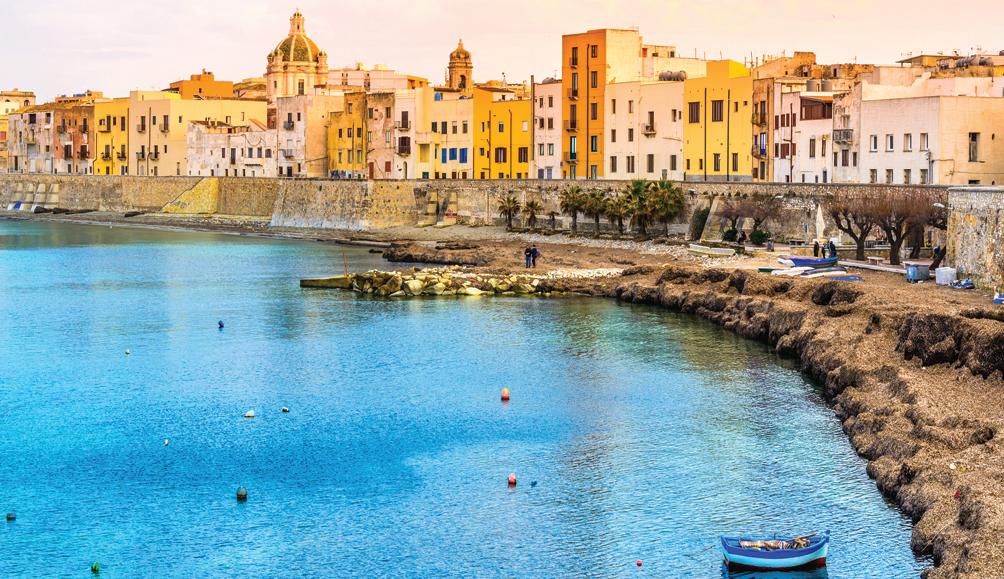
What’s included?
• International flights and transfers

• English-speaking tour escort throughout
• Local guides
• Meals as indicated
Graham and Susie have already travelled a lot in Europe and want to discover a new part of the world. They want to have very good service during their holiday and be free to travel around and explore the local nature.
This is where Christopher Columbus set foot over 500 years ago: a remote island with long white sandy beaches lining the turquoise waters of the Caribbean. San Salvador Island is a jewel in the archipelago of the Bahamas, totally dedicated to the discovery of new pleasures and activities.
From £1,065 per adult instead of £1,568 WITH THE EARLY-BIRD OFFER
All inclusive resort
Sports: beach volleyball, weights room, kayaking, snorkelling, windsurfing academy, Zumba
Unforgettable holidays and cruises exclusively for over 50s Wonders of the Mediterranean from £2,290 18 nights 2 people

DISCOVER THE CLASSIC CITIES OF ROME, FLORENCE AND BARCELONA
Step aboard Sapphire as she heads to the Mediterranean Sea and traces the coast of the Iberian Peninsula. Pause at the British outpost of Gibraltar, head to the sparkling shores of Italy, visit the vibrant Spanish cities of Barcelona and Valencia, and spend time in Oporto – the home of Portugal’s famous fortified wine.
Including
• All meals on board, including 24-hour room service
• All on-board gratuities
• Entertainment and activities
• Welcome cocktail party and Captain’s dinner
• Optional travel insurance and additional cancellation rights
• All port taxes and visas
• UK mainland travel service to and from Dover
Highlights
• Syracuse’s food market
• Visit the UNESCO-listed ‘Valley of the Temples’
• Explore Western Sicily
• See the Roman mosaics at Villa Romana del Casale
• Ascend the slopes of Mount Etna
TEAMWORK PRESENTING In small groups, find two examples of a European family package holiday (online or in brochures from a travel agency). Compare the two offers in terms of:
• price • destination and length of stay
• services and activities
Give a short presentation on the two holidays, stating which you think is the best and why.
1 Which of the following adjectives best describe an email? Why? long short fast slow detailed cheap expensive friendly accurate vague concise courteous informal
sender mittente recipient destinatario blind nascosto (di copia di email) attach allegare

FROM: The name and email address of the sender.
TO: The name and email address of the recipient(s).
CC: Carbon Copy. Here you put the address(es) of those you want to share the contents of the message with. The CC recipient’s name is visible to all recipients.
Communication is vital within the tourism sector to inform, present, promote and sell. Since tourism is an industry that sells intangible experiences, it is essential that communication tools are used effectively to provide customers with clear information and details about these intangible experiences on offer.

Written communication is an important part of working in the tourism sector, whether it is replying to an enquiry, confirming a booking, filling in a registration form or composing a promotional brochure. Apart from evaluating which form of written communication is the most suitable for your purpose, it is also essential to decide whether you need to use a formal or informal tone. Emails and memos are usually informal, while business letters and faxes are normally more formal. There are various standard formats and practices to follow.
Email (electronic mail) is a system of sending and receiving text messages digitally over a computer network, between personal computers, smartphones and similar devices. It is fast, convenient and eco-friendly, provided that you do not print out masses of emails unnecessarily. Emails are so direct and instant that they have changed the way businesses communicate and have led to a decrease in the formality of business correspondence.
Mike Stewart <m.stewart@startravel.co.uk>
Anne Gunnarson <agunnarson@balticcruises.com>
Ms K. Harrison <k_harrison@globetrotters.com>
15 September 20.. 11.26 a.m.
Request for information
Dear Ms Gunnarson,
DATE: The date and time the message was sent.
BCC: Blind Carbon Copy. A list of addresses which will also receive a copy of the message, but whose names are not visible to the other recipients. The BCC recipients can see the To and CC addresses.
ATTACHMENTS: You can attach pictures, documents or links to your email.
We were given your contact details by Ms Harrison from Globetrotters, who has done business with your company in the past. We are a travel agency based in Brighton, with over 15 years’ experience, and we would like to be able to offer high-quality cruises in Scandinavia to our clients. Could you please send us details of your current packages, with all the relevant terms and conditions? We look forward to your reply.
Kind regards,
Mike Stewart
SUBJECT: A short title for the email which refers to its contents.
BODY: The message.
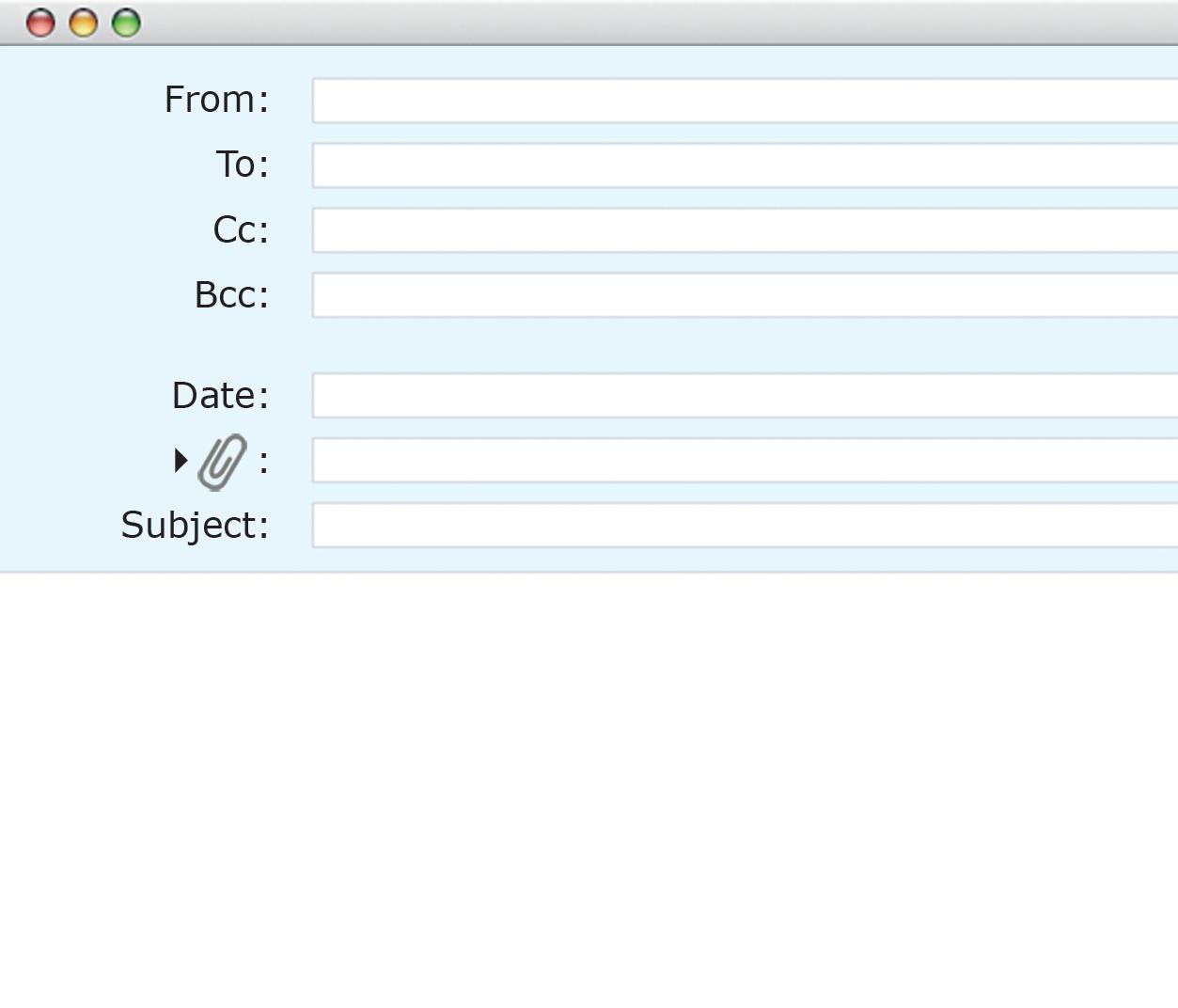
2 Find the equivalent expressions in the email on page 24.
1 Ms Harrison gave us your name. We were given your contact details by Ms Harrison.
2 Our travel agency has been in business for more than 15 years.
3 We are interested in offering…
4 Would you mind sending us…?
5 Looking forward to hearing from you.
6 Best regards,
WRITING AN EMAIL OR LETTER

Opening and closing salutations
OPENING SALUTATIONS
CLOSING SALUTATIONS
INFORMAL UK & US Dear Jack/Jennifer, Best wishes, / All the best,
UK
FORMAL
Body of the letter
Dear Mr/Ms Fordham, Yours sincerely, / Best/Kind regards, / Regards, Dear Sir/Madam, / Dear Sirs, Yours faithfully, / Yours truly, / Best/Kind regards, / Regards, Dear Mr/Ms Fordham,
Sincerely, / Sincerely yours, / Yours cordially, / Cordially, / Best/Kind regards, / Regards, US
Gentlemen: / To whom it may concern:
• I am writing in relation to/to enquire about…
• Many thanks for your letter of 17th September 20..
• With reference to your letter dated 11th November 20..
• We are one of the largest groups of hotels/resorts in…
• Our company specialises in…
• Enclosed you will find our latest brochure for winter sun holidays.
3 Look again at the email on page 24 and write an email to Anne Gunnarson. In your email, you should include:
• how you heard of the company;
• why you are contacting them;
• some details of your company;
• a request for their current brochure.
Truly yours, / Very truly yours, / Best/Kind regards, / Regards,
• We would be grateful if you could…
• We hope to welcome you to our hotel/on board one of our cruises in the near future.
• Thanking you in advance for your kind assistance…
• Please do not hesitate to contact us.
• We look forward to hearing from you.
• Looking forward to receiving a prompt reply.
A formal letter has strict rules of composition. It should be correct, courteous and well organised. Here is an example:
Letterhead or heading
References
Date of writing
Recipient’s address
Attention line (optional)
Opening salutation
Subject line
Body
Closing salutation
Signature
Position in company
Enclosures
&
Luxury Coach Hire
Your Ref: SG/rw – 18th October 20..
Our Ref.:
21st October 20..
Siler Group PLC 52 Banbury Road Stratford-upon-Avon Warwickshire CV35 0RW
Att: Ms* Rose Wallace
Dear Ms Wallace,
B&H Luxury Coach Hire
85 Melrose Terrace
Milton Keynes, MK9 2EL
Tel: 01908 689584
Fax: 01908 689588
Email: info@bhhire.co.uk
We were pleased to receive your enquiry regarding coach hire for the group of twenty delegates attending your next conference. All our coaches are a maximum of two years old, with air conditioning, WC and free Wi-Fi, to ensure an extremely comfortable journey for all passengers.
On the basis of your request, we enclose our best quotation for coach hire for five days, with full insurance and comprehensive breakdown cover. Please do not hesitate to contact us if you would like to make any changes to this or if you require further details.
We look forward to doing business with you.
Yours sincerely,
Ed Murray Customer Services ManagerEncl. (1)
1 Read the letter and answer these questions.
1 Who is sending the letter?
2 What is the name of the company he works for?
3 What kind of company is it?
quotation preventivo enquiry richiesta di informazioni enclose alleghiamo
Ms is now the most common title for women, although Mrs can be used for a married woman and Miss for an unmarried woman.
4 Who is the recipient of the letter?
5 What company does she work for?
6 What is the purpose of the letter?
Opening paragraph
The first paragraph states the purpose of the letter. It also refers to any previous correspondence or dealings.
Middle paragraphs
The middle paragraph or paragraphs are the main points of the letter, for example giving information about a company, specific details of a request or an explanation for a problem. Each point or theme should be in a new paragraph.
Closing paragraph
This suggests a course of action and tells the reader what response is required.
We are a leading luxury hotel group in Italy, with over 30 hotels across the country, and we would like to propose our hotels for your customers interested in visiting Il bel paese
All of our hotels are located in either breathtaking countryside, such as those in Tuscany and Le Marche, or in the historical centres of our country’s most famous cities, such as Turin, Rome and Palermo. We have been in operation for over 10 years and have built up an excellent reputation for high-quality amenities and top-class customer service. Our restaurant in Rome, for example, has just been awarded a Michelin star.
Please browse our website www.grandihotels.it at your convenience in order to view the luxury experience we offer.
Hoping to start welcoming your customers in the near future, we look forward to hearing from you.
Yours faithfully,
The most common way to separate paragraphs is to leave a line between them. It is also possible to indent the first line of each new paragraph.
2 Read the letter and answer these questions.
1 Does the sender know the recipient?
2 Who do you think the recipient could be? Why?

amenities servizi
3 What is the purpose of the letter?
4 What details does it contain?
3 Look again at the letter on page 26 and complete this letter of enquiry that Rose Wallace sent to B&H Luxury Coach Hire.
Dear Sirs,
We have seen your advertisement in ______________________ and we are interested in ______________________. We are organising a ______________________ and require ______________________.
Could you please send us ______________________?
In addition, we would like to know ______________________.
Thank you for your co-operation. We look forward to ______________________. Yours ______________________, Rose Wallace
4 You work for a travel agency and have a client interested in getting married in the USA. Write a letter (60-80 words) to Carol Vodel at Las Vegas Dreams. In your letter you should:
• say that you saw their advert on a website;
• request the price for a two-week, all-inclusive package;
• ask for further details about the documents needed.
Most faxes today are sent directly using a computer, smartphone or tablet and the Internet. There is no additional cost – just the existing data fee – and it is environmentally friendly as there is no need to print out any documents. Given that electronic faxes cannot be signed by hand, it is possible to use electronic or digital signatures.
Traditional faxes, sent using a telephone line and a fax machine, can still be useful for those without a computer or an Internet connection, or when the connection is unreliable. With a traditional fax, you get a receipt of the delivery and there is no risk of it ending up in the receiver’s spam folder as could happen with an email.
Faxes are commonly used by tour operators to automatically send the latest deals to travel agencies to make sure they are fully aware of all the special offers.
amended corretto
1 Read the fax and answer these questions.
1 Who is the sender of the fax?
2 Who is the recipient of the fax?
3 Have they been in contact before?
GREAT ADVENTURES
121 Kings Road
Cambridge
CB1 9HF
Tel +44 1223 918655
Fax +44 1223 918654
Email: info@greatadventures.co.uk
TO: Sam Nielsen, Hotel Manager, Four Seasons
FROM: Kevin Linton
NUMBER
OF PAGES: 2 (including this one)
SUBJECT: Amended booking form
Dear Sam,
FAX: +1 201 9756 481
DATE: 14th March 20..
With reference to our phone conversation earlier today, please find attached the amended booking form. As you can see, I have corrected the number of guests and the arrival date, so there will now be 21 guests arriving on 22nd April for five nights. Sorry for any inconvenience.
I look forward to receiving your confirmation.
Best regards, Kevin
4 What is the purpose of the fax?
5 What is the second page of the fax?
6 What action should the recipient take?
2 Write a short fax reply (about 35-45 words) from Sam Nielsen to Kevin Linton. In your fax, you should:
• thank him for the amended booking;
• confirm the rooms are available;
• inform him the new spa will be open for the guests;
• make a reference to future business together.
Many commercial documents are forms, such as booking and registration forms, customer data forms, and payment forms. A form, whether it is printed or online, is made up of fields which need to be filled in with specific information. It is important to follow the instructions carefully. For example, many printed forms require you to write in block capitals or to use only black ink. Online forms, on the other hand, often have required fields – normally marked with an asterisk – which must be filled in otherwise the form is not valid and cannot be submitted.

1 Match the expressions below to those with the same meaning on the form.
2 3 P Now listen and complete the form with the missing details.
3 Read the note that travel agent Leah Grisham has left her assistant and complete the online form. Can you book a car for the Wilson’s holiday to the UK? Just in his name Drake Wilson. A compact car is fine – the cheaper the better – and don’t forget to use our convention code 12345. Their flight gets into Heathrow at 15.15 on 14th June, but they’ve changed the departure and they’re now leaving from Manchester on 24th June and want to leave the car at the airport there. The flight is at 10.40.
Thanks, Leah
Oral communication whether face-to-face, on the phone or via web conference is a vital part of any job today. Therefore good oral communication skills – in both your mother tongue and in English – are essential to help you make a good impression, express your ideas clearly and get ahead in the world of work.
Making and receiving telephone calls in a foreign language is one of the hardest things to do in the workplace. As we are unable to see the person we are speaking to, we cannot use non-verbal clues such as eye contact, facial expressions and body language to help us understand our interlocutor. Fortunately, you can learn some standard phrases which will help you to master telephone skills and reduce the anxiety that is so common at first attempts.
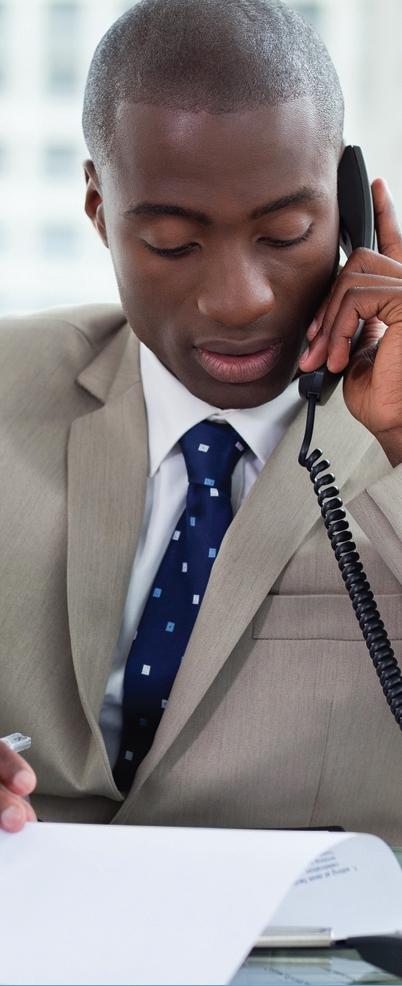


1 4 Read and listen to the phone call and find the equivalent expressions.

1 My name is Geoff Riley. This is Geoff Riley.
2 Can I speak to…?
3 She isn’t here.
4 Would you like to leave a message?
5 This is Joanne Wilkins.
6 Could I have…?
2 5 Listen to this phone call and complete the sentences.
Geoff Riley calls one of his customers, Samantha Cobb, about the last-minute holiday in Jamaica.
Samantha Hello.
Geoff Hello. It’s Geoff Riley from TravelEase. (1) Samantha Cobb?
Samantha Yes, (2)
Geoff I’m (3) to tell you that I’ve got the information regarding the holiday in Negril. You can leave from Manchester Airport and it’s only a £30 surcharge.


Samantha Oh, good. Manchester would be perfect. (4) the hotel?
Geoff The tour operator has confirmed that the resort is Blue Cove, a 4-star hotel right on the beach. There is still (5) for departures on Saturday the 14th and the 21st, but I suggest (6) as soon as possible.
Samantha Sure. I’ll come round after work this afternoon.
Geoff We’re open until 7.30 p.m. tonight.
Samantha OK. See you later. Bye.
Geoff Goodbye.
3 6 Listen to this phone conversation between a tour operator, Janet Reese, and a travel agent, James Lang, and answer these questions.
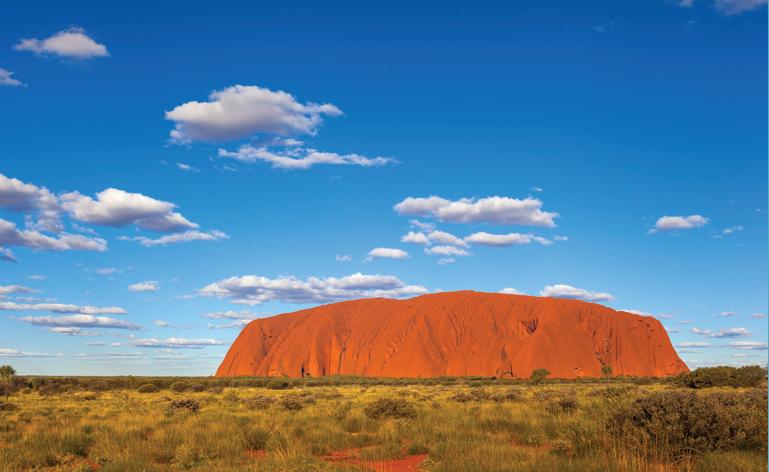
1 What is the purpose of the phone call?
2 What is the destination of the holiday?

3 What changes are there to the holiday?
4 What does James Lang request?
4 6 Listen to the phone call again and write down the expressions for these functions. Then complete the table with other expressions from the previous phone calls.
ANSWERING THE PHONE INTRODUCING YOURSELF
ASKING TO SPEAK TO SOMEONE

SAYING WHY YOU ARE CALLING
CLOSING THE CONVERSATION
Answering the phone
• Good morning./Hello. Judy Lennon speaking.
• Hello. This is Judy. Can I help you?
• Speaking! (If the caller has asked for you by name)
Introducing yourself
• Good morning./Hello. This is John Boswell from Sun Travel Agency.
• My name is John Boswell.
Asking for caller identification
• May I ask who’s calling?
• Could I have your name, please?
• Who’s calling, please?
Saying why you are calling
• I’m calling to…/about...
• I’m phoning you about…
• I’d like to…
Asking to speak to someone
• Could/May I speak to Mr Miller, please?
• I’d like to speak to Mr Miller, please.
• Could you put me through to Mr Miller, please?
If you keep the other person waiting
• Hold on, please.
• Can you hold on a moment?
• Hang on a second. I’ll see if he’s there.
• Sorry to keep you waiting.
Saying that someone is not available
• I’m sorry, but Mr Miller isn’t here at the moment/is out of the office/is in a meeting.
• I’m sorry, but the line is engaged/Mr Miller is on another line.
• I’m afraid he isn’t in today. Can he call you back tomorrow?
Offering to take/Leaving a message
• Would you like to leave a message?
• Can I take a message?
• Can I take your name and number?
• Could you ask Mr Miller to call me back, please?
• Can I leave a message for Mr Miller?
Promising action
• I’ll give Mr Baxter your message as soon as he comes back.
• I’ll ask him/her to call you later.
• I’ll do it straightaway/at once.
If you don’t understand what the other person is saying
• Sorry?/Pardon?
• Could you repeat that, please?
• Sorry, I can’t hear you. Can you speak up, please?
• I’m sorry I didn’t catch that.
• Can you spell that, please?
Saying goodbye
• Thank you for calling.
• Thanks very much for your help/the information.
• You're welcome. Bye.
5 COMMUNICATION In pairs, read the instructions and act out the phone conversation.
You work for the travel agency GetAway. Call the local tourist office.
Ask to speak to Mr Greyson.
Leave a message asking him to call you back in the afternoon.
Thank the person.
Close the conversation.
You work for the local tourist office. Answer the phone.
Say Mr Greyson is not in the office. Ask if the caller wants to leave a message.
Tell the caller you will give Mr Greyson the message.
Close the conversation
• Be clear and concise.
• Be careful with your pronunciation and speak slowly.
• If necessary, ask or give the spelling of names. Note that not everyone uses the international spelling alphabet (Alfa, Bravo, Charlie, Delta and so on) so you might hear people saying ‘S for sugar, F for Freddie’.
• Make sure there is little background noise.
• Smile! It affects your tone of voice and makes you sound more confident and helpful.
Indirect questions
To make a question more polite, we can use the following expressions: Can/Could you tell me…? / Do you know…?/ I’d like to know…
Note the changes in the word order:
How much does it cost? Could you tell me how much it costs?
Can I book online? Do you know if I can book online?
Are there any special offers? I’d like to know if there are any special offers.
1 Put these words into the correct order to make indirect questions.
1 to know / a brochure / have / I’d like / you / if
2 a supplement / me / is / could you / there / if / tell / ?
3 you / from / which / the flight / know / do / airport / leaves / ?
4 in the office / will / tell me / can you / he / be / when / ?
5 the tour / lasts / I’d like / how long / know / to
6 near / the hotel / do / the beach / if / you / know / is / ?
2 Change these questions into indirect questions.
1 Where can I buy a bus ticket?
2 When does the castle open?
3 Do I need to book in advance?
4 Are there any reductions for students?
5 Is there a bank near here?
6 How long does the journey take?
6 COMMUNICATION In pairs, act out mini-telephone conversations for these situations. Sit back-to-back so you can’t see your partner’s face to make it more realistic. Remember to swap roles.
You want to speak to the hotel manager at Hotel Horizon, but he/she is out. Ask when you should call back.
You work for Hotel Horizon. The manager is on holiday and will return next Friday.
You want to speak to Julie Nielsen at Beach Villas, but she is not in the office. Ask for her to call you back.
You work for Beach Villas. Julie Nielsen is not in the office. Ask to take a message.
You call Ewans Coach Hire to ask about the costs of hiring a coach. You need the information urgently.
You work at Ewans Coach Hire. You can send the caller a price list immediately by fax or email.
You call to speak to Mr/Ms Wilson at Top Trips to ask if the details of the day trip to Oxford are ready.
You are Mr/Ms Wilson at Top Trips and you answer the phone. You don’t have all the details ready at the moment but you can send an email tomorrow.
Voicemail is a useful tool for both landlines and mobile phones. It allows a company to leave an automatic message regarding information like opening hours or alternative contact numbers, while individuals can leave a personal message for when they are unavailable. Callers can leave a message directly for the person they are trying to contact without the risk that a colleague forgets to pass on a message. Many companies now use an automated information system for answering phone calls in order to direct the caller to the correct department without using a receptionist or switchboard operator. These systems have a recorded message which lists the various services or departments and the relevant number to press.

1 7 Listen to three people leaving voicemail messages for Martin Fleet. Tick (✔) which of these points the callers include in their messages.
Their name/position/company
The reason for calling
Their contact details
Their availability
2 8 Listen to this automated information system for an airline and write which number (1-5) to press for each option. There are two extra options you do not need.
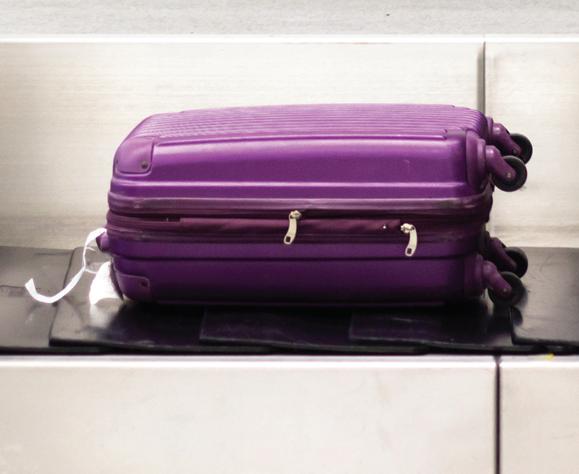



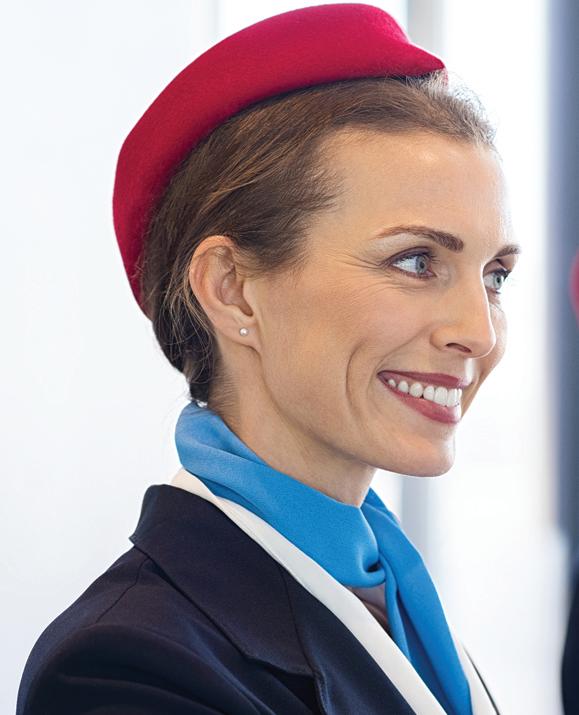
special deals
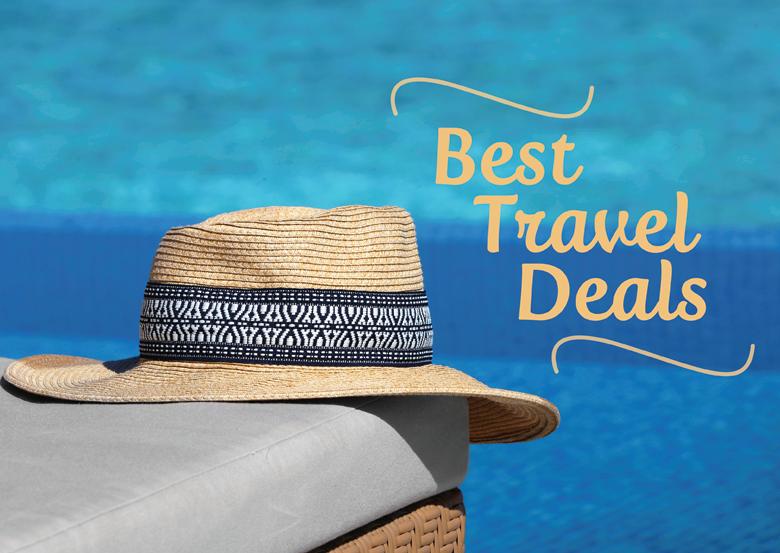
Many jobs in the tourism industry, from tour guide or travel agent to hotel receptionist and holiday rep (see pages 76-84), are client-facing roles and ones where you often deal with people of different nationalities. In addition, co-workers are likely to be from various countries around the world, as well as locals. Being able to conduct positive and successful face-to-face communication is therefore a vital skill, whether that is an informal chat with a colleague, a negotiation with a company representative, helping a customer or answering an enquiry from a member of the public. While the content and tone of what you say will change depending on the context and how well you know your interlocutor, it is always important to smile and be pleasant and friendly. You should pay attention to your body language – gestures, eye contact and so on – and also respect the other person’s personal space. You need to be aware of any sensitive topics to be avoided in conversation, such as politics and religion. Finally, you must be respectful of individual customs, avoiding all forms of stereotyping, cultural assumption, prejudice and ethnocentrism.
TIME Not everyone gives the same importance to punctuality for meetings. In Britain and Japan, for example, it is very important to be on time, but in certain parts of the Arab world it is standard to be kept waiting.
PHYSICAL DISTANCE In the USA and Europe, you shouldn’t stand too close to someone when you are talking. It can seem invasive and off-putting.
1 Why is face-to-face communication such a fundamental skill to have?
GREETING There are various ways of greeting people in formal and informal situations and it is best to know the custom for the country or nationality in question: shaking hands (Europe and the US), bowing (Japan), putting your palms together (Thailand) and so on. Hugging and kissing is best left to informal occasions and people you know well in order to avoid offence.

EYE CONTACT This is expected in Western culture and is a sign of interest and engagement with the conversation. In other cultures, especially hierarchical ones like Japan and some Middle Eastern countries, it can be seen as disrespectful or even aggressive.
GESTURES If you cross your legs when seated, you need to be careful as showing the sole of your shoe to someone can be considered offensive in Asia and the Middle East. Nodding your head up and down is almost a universal gesture for agreeing with someone, but in Greece a single nod downwards is for agreement, while a single nod upwards is for disagreement. Other gestures that you might also consider universal – the OK sign, or pointing with your index finger – can have different meanings or be offensive in some parts of the world.
READING COMPREHENSION & SPEAKING
2 CRITICAL THINKING Read the text and discuss these questions in pairs.
1 Can you think of other jobs in the tourism and hospitality industry where face-to-face communication is important?
2 Why is face-to-face communication such a fundamental skill to have?
3 How might what you say change if you know the person you are speaking to?
4 Why is it best to avoid topics like politics and religion in conversation?
5 Do you think body language is an essential part of face-to-face communication? Why/Why not?
6 How much importance is given to punctuality in your country?
7 Why is personal space important?
8 What different customs are you aware of, e.g. for greeting people?
FACE-TO-FACE
Offering help
• Can/May I help you?
• How can I help you?
• Do you need any help?
• What can I help you with today?
Asking for information/help
• Could you tell me...?
• I’d like to know/have…
• Have you got any information on…?
Giving information
• Here is a map of the city centre/the island/the underground.
• Here are some leaflets with information on day trips/ sightseeing tours/the main attractions.
• The castle/museum opens/closes at 9 o’clock/7.30 p.m.
• Tickets are available online or at the tourist office.
• Adult tickets cost £15 and a child ticket is £8.50.
• Entrance/Travel is free for children under 5.
• You can catch bus 74 to the port/station.
• It takes about 15 minutes by bus/on foot.
Closing the conversation
• Thanks very much for your help/the information.
• You’re welcome.
• Have a nice day/a good trip.
• Enjoy your holiday.
3 COMMUNICATION In pairs, act out the following situation. Stand up and move around to make it more realistic. Remember to swap roles.
You are in Dublin on holiday and would like some information about day trips to Kilkenny.
You work in the tourist information centre in Dublin. Use this leaflet to provide the tourist with the information he/she needs.
Modern, high-quality, air-conditioned touring coaches, with free Wi-Fi Kilkenny's rich medieval heritage is evident in the city's treasure trove of historical buildings and landmarks, exemplified by the magnificent Kilkenny Castle. Kilkenny is arguably the most important medieval city in Ireland, with the current layout of the city clearly grounded in its medieval roots.
Adult Cost €42 per person
Student/Child Cost €37 per person
08.45 – 09.00 Depart Dublin (please see our pick up schedule and map) The journey to Kilkenny takes you through some of Ireland’s most spectacular and varied scenery.
10.45 Arrive in the Medieval Capital of Ireland – Kilkenny City
Take a Guided Walking Tour of the City (included) through Kilkenny’s medieval side streets and visit the 'Black Abbey'. Lunch (not included) and free time to explore the city, castle and gardens.
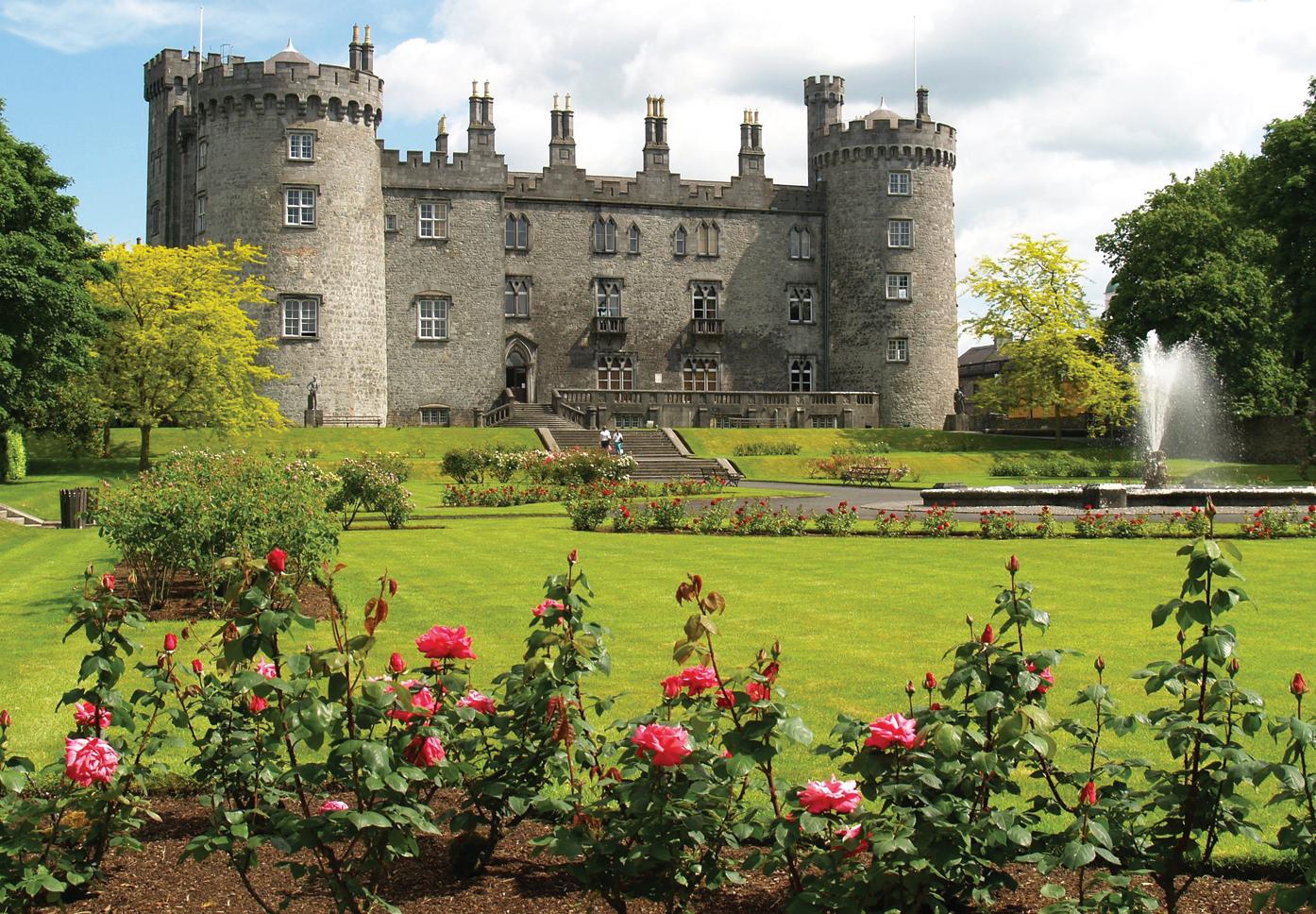
16.15 Depart Kilkenny
18.00 Arrive back in Dublin – drop off point Westmoreland Street (near Trinity College)
The tourism and hospitality industry relies on visual aids as promotional and informative tools. Imagine being a tourist in a foreign country where you can’t read the language. How would you know where to catch a bus or find a toilet without the internationally recognised symbols? How could you decide which resort to book without seeing any photos of the location and facilities? How long would it take you to compare hotel facilities if you had to read a long, written list instead of looking at the classic pictograms for the services on offer? Maps, diagrams, photographs, tables, pictograms and symbols are used in printed information like tourist guides, information leaflets, tour operator brochures and in towns and attractions to give immediate and clear information to all visitors or users.
Augmented reality technology on a city app. AR combines virtual information with the real world to provide information to visitors and enhance their stay.

1 Match these common pictograms/symbols to the correct service or facility.








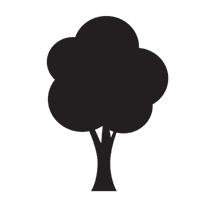

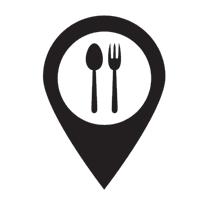
2 In pairs, think of all the pictograms and symbols a tourist might see from his/her arrival at an airport to checking-in at a city centre hotel. How many did you come up with?


3 ORGANISING CREATIVITY What visual aids would you include in...
• a brochure for a beach resort?
• a leaflet for a historical palace?

Here are some ideas to help you.
view of the place interior/exterior
• a holiday brochure for a tour operator?
itinerary
voyage
break
a ten-mile journey / a five-hour journey
How long does the journey take?
flight
tourist
holidaymaker / vacationer (US)
visitor
to take a trip
to go on a trip
to be away on a trip
holiday / vacation (US) day trip business trip
excursion
daytripper
sightseer
TRAVELLERS
cruise backpacker
passenger
explorer expedition
to go on a journey
to set out on a journey
JOURNEY
TRAVEL TRIP
the trip of a lifetime
verb
I like travelling. What’s the best way to travel? She travels a lot for her job.
unlimited travel international travel air/road/rail travel
TRAVEL
noun
adjective
overseas/foreign travel business travel
travel agency/agent
travel industry
travel guide/brochure
travel plans
travel sickness
travel insurance
travel writer
school trip
sightseeing trip
return/ round trip
have a good/safe/ pleasant journey TOUR
verb
noun
adjective
They toured the Great Lakes last summer. She has toured extensively in South America.
a three-week tour
Grand Tour a sightseeing tour a tour of the city a package tour to set off on a tour to go on a tour
a tour operator a tour company
1 Look at the mind maps about travelling and travellers on page 38 and choose the correct word to complete these definitions.
1 A is a long trip by sea.
2 A is a journey by plane.
3 The person who visits monuments, historical buildings and interesting places is a
4 A is a short holiday of two/three days.
5 The time when you do not have to go to work or school is called a .
6 Someone who visits new and undiscovered places is an
2 Look at the mind maps about the words journey, travel, trip and tour on page 38. Then choose the correct option.
1 I’d like to run a company specialised in business trip/travel/journey
2 If you live near the south coast of England, it is quite easy to go on a day journey/tour/trip to France.
3 International travel/tour/journey has continued to increase since the early 1960s.
4 It is quicker to journey/travel/tour there by train, but the journey/travel/tour is much more interesting by bus.
5 If you have time, I really recommend going on a tour/trip/travel of the old mining town. It’s fascinating.
6 ‘Did you have a pleasant trip/travel?’ ‘Yes, but the return tour/journey was delayed by four hours.’
3 Decide whether the words in the box are countable (C) or uncountable (U). Then use some of them to complete the sentences below, making any necessary changes.
accommodation U activity − advice − destination − facility − heritage information − leisure − package holiday − service
1 When booking a hotel, many people want to know about the available, such as a gym or pool.
2 It is important to protect our natural and cultural and minimise our environmental impact.
3 It isn’t easy to find in Sardinia during the summer season. My is to book early to find a good hotel.
4 are a product aimed at the mass tourism market.
5 ‘What’s the most popular for tourists in your country?’ ‘It’s probably the capital city.’
4 Match each verb in the first column to the verb with the opposite meaning in the second column. Then write the noun forms for each verb.
neglect 2 increase b rise 3 damage
1 improve improvement
weaken 4 strengthen
decrease 5 protect
deteriorate 6 fall f conserve
5 Combine the words from each column to form common collocations.
1 inbound a operator
2 overseas b tourism 3 economic c currency 4 distribution d board 5 foreign e chain 6 tourism f services 7 tour g visitors 8 global h impact
6 Match these words to their synonyms.
1 drawback a let
2 aim b wealthy
3 enable c knowledge
4 affluent d destination
5 accessible e goal
6 predicted f affordable
7 place g forecast
8 awareness h disadvantage
The Grand Tour, which started in the 18th century, was a cultural and educational trip across Europe for aristocrats and upper classes which lasted up to three years, during which they would visit the most important European cities to enrich their knowledge.

Today, no one has the time nor the money to spend travelling like this, but could we actually have more in common with the Grand Tour travellers than is apparent at first glance?
Firstly, we can look at the destinations. The Grand Tour included cities such as Paris, Venice, Florence, Rome and Athens because they are unique seats of classical and renaissance art, architecture and culture. These cities are on many people’s bucket lists today and they remain must-have
destinations for exactly the same reasons as in the past. Secondly, there is the idea of wanting to see and do everything everyone else does. In 1776 English author Samuel Johnson wrote: ‘A man who has not been in Italy is always conscious of an inferiority, from his not having seen what it is expected a man should see.’ This could be a modern day comment about FOMO – Fear of Missing Out – which is why once a place becomes popular, everyone wants to be seen and photographed there so as not to feel different or left out.
The cicerone or bear leader – the name given to the companion/tutor/chaperone figure that accompanied aristocrats on the Grand Tour – has been replaced by a smartphone and apps. We take selfies and post them on Instagram and Snapchat to show, and perhaps boast a little bit about where we are and what we are doing: in front of the Colosseum, on a bridge overlooking the Grand Canal, an aperitif at sunset in the Tuscan hills.
1 INVALSI Read the article and choose the correct option.
1 What is the purpose of the article?
A To describe what the Grand Tour was like.
B To show how tourism has advanced since the 18th century.
C To point out some similarities between modern tourism and the Grand Tour.
D To prove that Italy has always been a superior destination for tourists.

2 Cities such as Rome and Florence are still popular today because they…
A are cheap places to visit.
B haven’t changed since the 18th century.
C are very attractive.
D are important artistic and cultural centres.
The Grand Tour travellers commissioned artists to paint their portraits in front of those very landmarks. They would also bring back souvenirs of their travels, just like we do today. The modern equivalent of the travel journals and books that writers like Goethe and Sterne wrote during their travels? They are the blogs and social media posts recounting the day’s experiences, the people met and the food tasted. And as for great nightlife and fun parties while on holiday, they certainly happened back in the 18th century too, so we’ve got no claim to be the first there either.
While the desire and passion for adventure that drove the aristocrats of the past still endures, luckily what has changed is that you certainly don’t need to be a member of the upper classes to set off on your own Grand Tour, whether that is to a remote corner of the earth or somewhere more familiar and closer to home.
3 Samuel Johnson’s quote is used to show that…
A aristocrats were superior to other travellers.
B people have always wanted to copy each other.
C tourists have always preferred Italy to other countries.
D popular tourist destinations have changed.
4 The 18th century equivalent of selfies were…
A postcards.

B souvenirs.
C portraits.
D travel diaries.
5 What conclusion does the article make?
A Travel is open to more people today.
B You need to be adventurous to travel.
C Travel to remote places is more desirable.
D Few people have a passion for travel.
2 Write two short paragraphs to explain:
1 the business of a tour operator and what package holidays are;
2 the role of a travel agent and why it is important.

3 Read this conversation in a travel agency and complete the travel agent’s questions (1-5).
1 Travel agent Where ?
Client Spain, probably one of the (6) .
2 Travel agent Who ?
Client One adult and (7)
3 Travel agent What type of holiday ?
Client A (8)
4 Travel agent When ?
Client The middle of (9)
5 Travel agent How much ?
Client Under £ (10) .
4 9 P Now listen to the conversation and complete the answers (6-10) with one or two words.
5 You work in a travel agency. Write an email to a tour operator with whom you have already done business. In your email you should:
• ask if their new brochure for Spain is ready;
• explain that you have a large group of over 60s interested in a holiday there;

• ask for suggestions for the best hotel and deal for them.
6 COMMUNICATION EMPATHY Watch this video of a tourist asking for information in a tourist information office. Read the prompts on the screen and take the role of the tourist asking for information.

7 Now watch the full version of the video and compare your answers.

8 COMMUNICATION In pairs, role play similar conversations between a tourist and a person working in a tourist information office. Use the ideas below to help you, referring to events and places in your local area. Remember to swap roles. Ask about:
• cheap accommodation
• public transport to another location
• a festival or other event
• a sightseeing tour
• opening times and ticket prices for a local attraction
sustainable development sviluppo

sostenibile aim obiettivo
well-being benessere affordable a prezzi accessibili



Do you know what the 2030 Agenda for Sustainable Development is? Let’s find out. In 2015 the United Nations (UN) decided that we all must work together to find solutions to the problems of our world. The main aim is to end poverty in all its forms, to create ‘a world of universal respect for human rights and human dignity, the rule of law, justice, equality and non-discrimination’.
The UN created 17 Sustainable Development Goals (SDGs) and set a deadline to reach them: the year 2030.
It is very important that all citizens contribute to the Agenda. This Agenda is a plan of action for everybody: countries and individuals. Its common goals aim to end poverty and need through sustainable development. This will involve every part of society: from the private and public sectors, civil society and charities, universities and research centres, people providing services and culture. Acting together in partnership, they will take the urgent steps needed to move the world onto a sustainable and resilient path, leaving nobody behind.
https://sdgs.un.org/2030agenda



The 17 Sustainable Development Goals of Agenda 2030 fall into these five P categories:

People – ending poverty and hunger
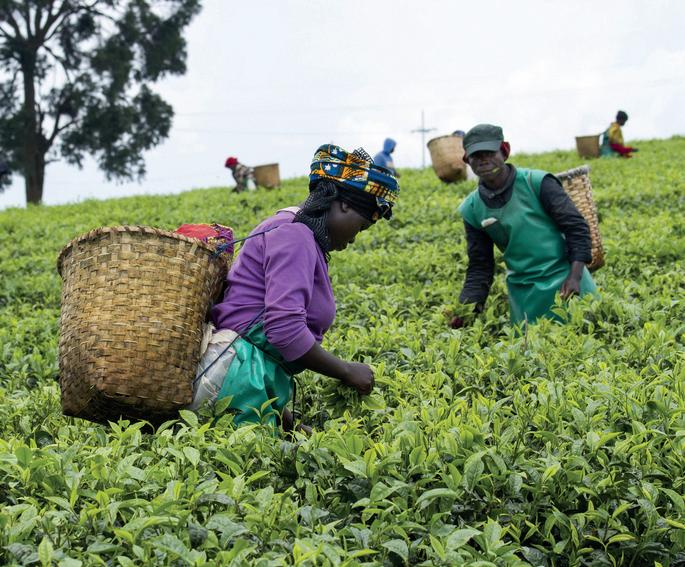
Planet – protecting the planet from degradation
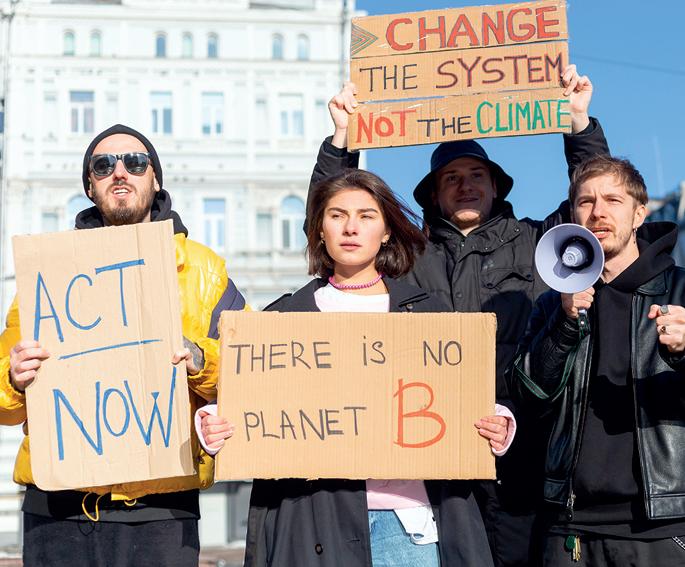

Prosperity – making sure all human beings can enjoy successful and fulfilling lives

Peace – encouraging peaceful, fair and inclusive societies, free from fear and violence
Partnership – creating the connections needed to implement this Agenda

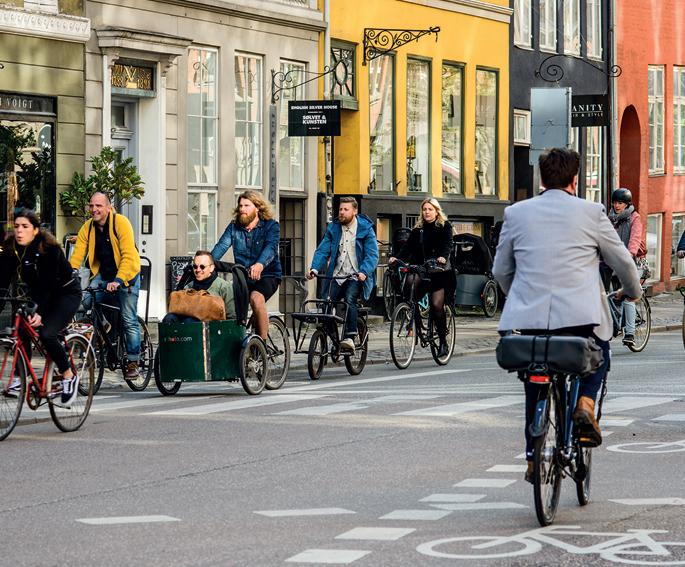
1
The AIM of sustainable tourism is to control and reduce to a minimum the negative economic, social and environmental impacts of tourism, while maximising the benefits for current and future visitors, host countries and their people, our cultural and historical heritage, and the natural world. It is specifically included in the targets of Sustainable Development Goal 8 – ‘devise and implement policies to promote sustainable tourism that creates jobs and promotes local culture and products’, Goal 12 – ‘develop and implement tools to monitor sustainable development impacts for sustainable tourism’ and Goal 14 – ‘increase the economic benefits to SIDS and LDCs from the sustainable use of marine resources, including through the sustainable management of tourism’. However it clearly can contribute directly and indirectly to all of the Sustainable Development Goals, such as reducing poverty, creating sustainable cities and increasing the use of clean energy.
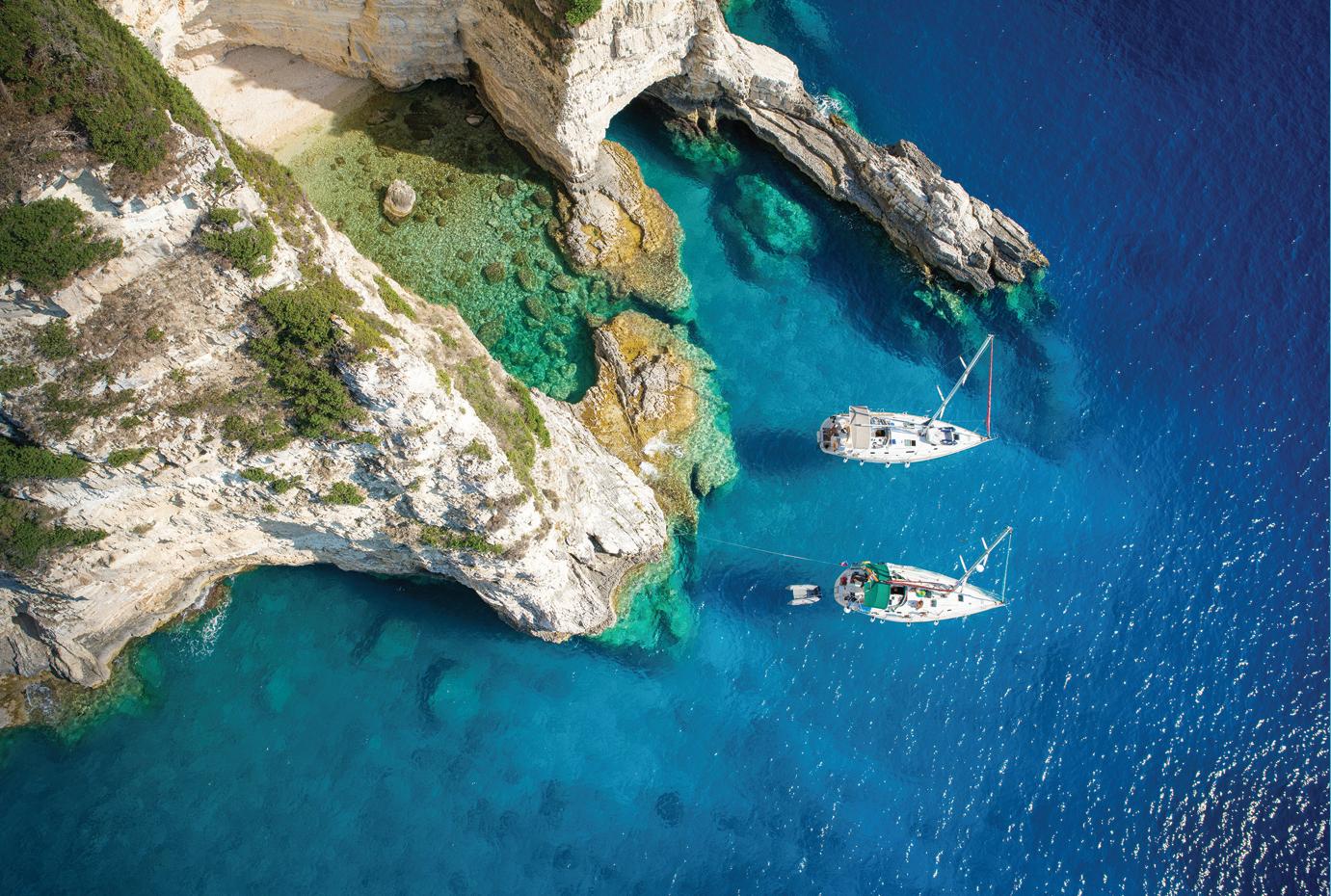
Sustainable tourism does not follow just one set of rules, since the impacts of tourism differ according to the place and so solutions are different too. And it is not just restricted to SIDS, which rely on coastal and ocean-related tourism, or countries with an endangered ecosystem or important natural features, although these often feel the negative impacts much more. It is relevant to a resort in the Bahamas, which should use green energy sources and deal with recycling correctly, just as much as to a resort in Zanzibar, which needs to conserve water and help reduce poverty.
All the countries of the world need to follow SUSTAINABLE TOURISM PRINCIPLES which include:
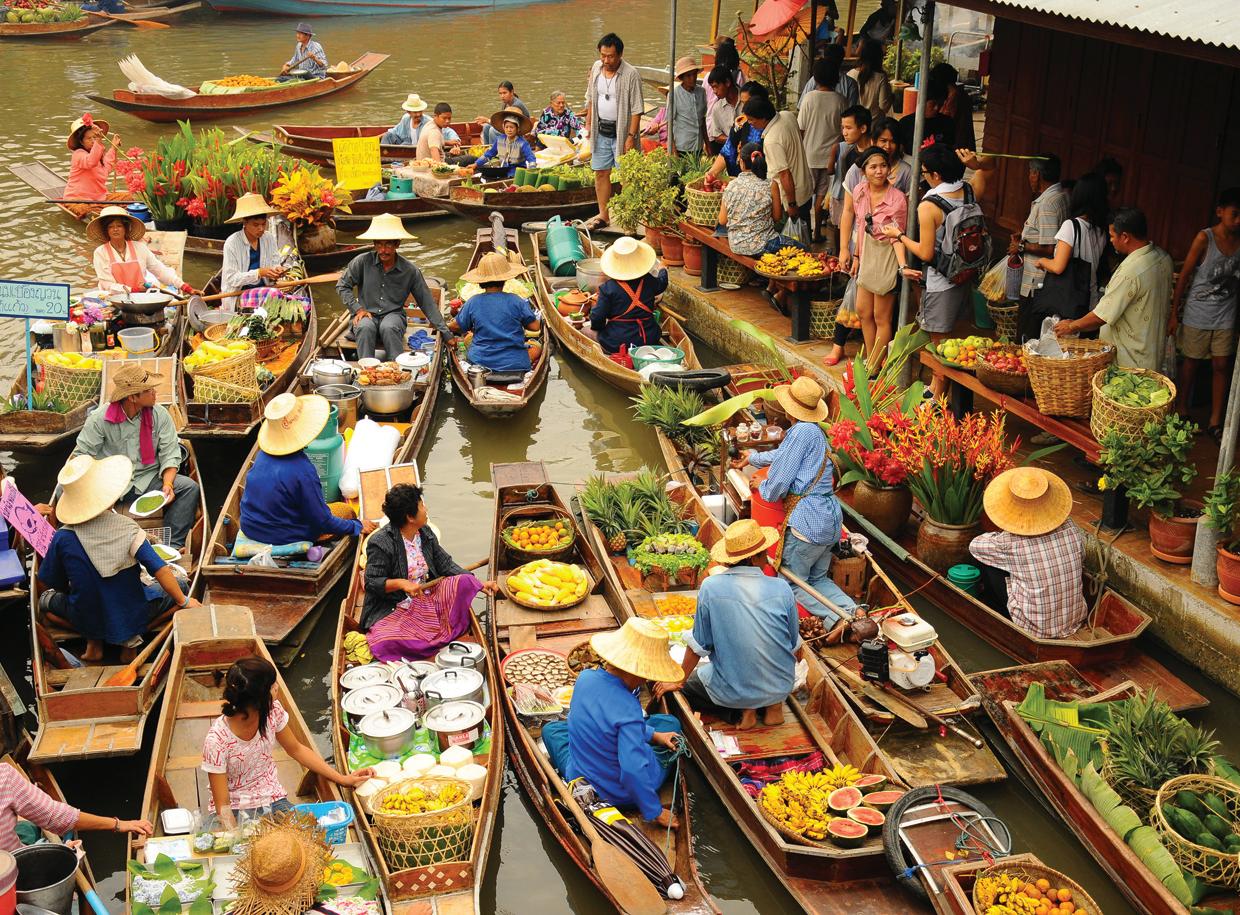

• following a code of conduct established by an international organisation such as UNWTO and the Global Sustainable Tourism Council;
• having a certification from organisations such as the Rainforest Alliance;
• employing local people, paying fair wages and offering training;
• buying and promoting locally-produced goods, for example for restaurants and souvenirs;
• protecting the environment with conservation projects;
• recycling, using alternative energy, conserving water and implementing the correct treatment of waste.
The RESPONSIBILITY for creating sustainable tourism lies with governments, international organisations, tour operators and other tourist-based businesses, local people and, lastly, with the tourists themselves. Sustainable tourism is therefore not a niche or specialised form of tourism, the latest fashion amongst a small group of eco-warriors, but it is what tourism should be everywhere and for everyone. It does not matter what kind of holiday you want to take or where you want to go, what is important is how responsibly you behave from the moment you book your holiday to the moment you return: making a conscious choice to use a company with sound ethics; offsetting the carbon footprint* made by your journey; respecting the history, culture and people of the place you are visiting; protecting animals. The consequences of tourism have a global effect; there needs to be a global effort to overcome them.
2 Read the text on pages 44 and 45 and answer these questions.
1 How important is sustainable tourism for the SDG goals?
2 In what way does sustainable tourism try to protect the future of our planet?
We use the term carbon footprint to indicate the amount of greenhouse gases that people cause, directly or indirectly, during their daily activities and lives, such as driving a car, heating a house or taking a flight.
3 How do the two examples of the Bahamas and Zanzibar demonstrate that sustainable tourism is of global relevance?
4 Who is responsible for ensuring that the tourism sector works towards sustainability?
5 Why shouldn’t sustainable tourism be considered as a specialised form of tourism?
6 Should tourists only consider the principles of sustainable tourism while they are on holiday? Why/Why not?
3 Find the words in the text for these definitions.
1 : manufactured or grown in the area
2 : behaviour
3 : unwanted material, rubbish
4 : causing little or no damage to the environment
5 : right, reasonable
4 10 P Listen to an executive from a national tourist board explaining how tourists should behave in order to contribute to sustainable tourism in cities. Complete the sentences.
1 Don’t on the steps of a church or historic monument.
2 Be of permanent residents of the city and their needs.
3 Try to speak a little of the local language and sample the .
4 If renting an Airbnb apartment is , don’t do it.
5 other areas beyond the typical main sights of the city.
6 Try to travel so there will be less congestion.
5 In pairs, decide which of these actions of a tourist follow the principles of sustainable tourism. What would the positive and/or negative impact of each action be?
• Buying a souvenir made with local seashells
• Eating a speciality in a restaurant run by local people
• Asking for clean towels in your hotel room every day
• Having a 3-minute shower
• Throwing plastic bottles in the general waste bin
• Booking all your excursions with your travel agent before you leave
6 CRITICAL THINKING What changes could be made in Italy/your area to make tourism more sustainable? Think about the actions and changes governments, local authorities and businesses should implement, as well as how tourists themselves can be more responsible.

1 What is marketing? Why is it necessary? Discuss these questions in pairs, then read the text and check your ideas.
Destinations, resorts, tour operators and other businesses in the tourism industry face more and more competition. How can they remain competitive and increase their sales and profits? In a word, marketing. Through marketing a company can identify and analyse the needs of its customers, plan and create the relevant products and services to satisfy these needs and then promote them
What demographic, psychographic and behavioural differences might there be between a couple going on their honeymoon and a group of young adults going abroad for the first time?
One of the first things to understand is the target market – the potential buying audience for either a product or a service. Given that markets change according to the product or service being offered, it is very important for an organisation to know who makes up their market: a couple planning their honeymoon is a very different type of customer from a group of young adults going on their first trip abroad. Market segmentation is the classification of customers into subgroups or segments according to pre-set, shared characteristics. In the tourism and hospitality industry, these are the main types of segmentation:
TRAVEL MOTIVATION business, visiting friends and relatives and leisure (see page 11), which can be subdivided further into religious, health, cultural, ecotourists and so on;
DEMOGRAPHIC gender, age, ethnicity, education, income, social class or grade, family size, religion;
GEOGRAPHIC resident country or region;
PSYCHOGRAPHIC type of lifestyle, interests, values, attitudes;
BEHAVIOUR the adventurous tourist wants to discover new places and likes making their own arrangements, while the safety-conscious tourist prefers familiar areas and knowing what to expect.
2 Read the text and choose the correct option.
1 The term ‘market’ refers to…
A the place where consumers buy a product or service.
B the group of consumers interested in a product or service.
C the people involved in the marketing decision process.
2 Market segmentation is used to…
A understand customers better.
B improve sales.
C both of these.
3 What does demographic segmentation take into account?
A where a customer lives
B why a customer wants to travel
C how old a customer is
4 What is geographic segmentation based on?
A the place where a customer lives
B the place a customer wants to travel to
C the places a customer has already visited
5 Consumers’ attitudes are at the basis of…

A demographic segmentation.
B psychographic segmentation.
C geographic segmentation.
Four main factors, commonly known as the 4 Ps – product, price, place and promotion –determine how a product will be marketed. These elements of the marketing mix can be adjusted to find the right combination that will appeal to customers and simultaneously serve their needs while keeping the organisation competitive and generating optimum profits.
The first P stands for product, but in the tourism and hospitality sector we are generally not talking about tangible products but services which are intangible. This means they cannot be touched or possessed. The food served in a restaurant is a tangible product as it can be eaten, but the service offered by the waiter can only be experienced. Travel products are usually also perishable, meaning that the offer has a limited life. For example, a hotel room can only be booked for a certain date before the date in question has passed.
The travel and tourism sector is highly competitive so price is an extremely important element. Pricing must be calculated to provide a profit to the company, so has to take into consideration the fixed and variable costs the company has. However, it also has to be competitive against similar products or services on offer as most customers are always looking for value for money. It is usual for prices to be different for high and low seasons.
This refers to both the chain of distribution (how the product or service is distributed and where it can be purchased) and the physical location of the destination/holiday/ service. A company has to consider factors like cost and control when deciding whether to distribute their products directly to consumers or indirectly through intermediaries like travel agents. The physical location can be an entire country, a city or a purpose-built resort.
This is the way a company provides customers with information about itself and its products or services. It includes activities like branding, advertising, public relations, special offers and exhibitions, and often focuses on the USP* of the product or service. Promotion is important to improve a company’s image, launch a new product, increase popularity of existing products, attract new customers and, naturally, increase sales.
Nowadays it is common to add three extra Ps to the traditional marketing mix –physical evidence, process and people. The latter in particular is extremely relevant for the tourism and hospitality industry. The people who come into contact with the customer – at whatever stage – will make an impression that can have a profound effect, both positive and negative, on customer satisfaction. Therefore correct employee training and attention to customer service will reflect positively on the company and add value.
USP stands for Unique Selling Proposition and is what differentiates a company’s products or services from the rest of the competition. A critical part of promotion and advertising, the USP conveys the real or perceived benefit of a product or service as a way to convince buyers to prefer one brand/company over another.
CRM
1 Read the text and decide whether these sentences are true (T) or false (F). If there is not enough information, choose ‘doesn’t say’ (DS).
1 The correct mix of the 4 Ps is essential to market a product successfully.
2 The P for people involved in delivering a service is less important than the other Ps.
3 Tourism products or services are often intangible and perishable.
4 A company should always price its product lower than a competitor’s.
5 It is important to consider the cost when choosing a distribution channel.
6 Promotion is not necessary for existing products but only for new ones.
A SWOT analysis is a marketing tool which is used in many business contexts to anticipate future actions that may be needed to defend or expand a company’s market position. It is an acronym that stands for strengths, weaknesses, opportunities and threats. Strengths and weaknesses are internal factors, that is within the control of the organisation, while opportunities and threats are external factors, that is beyond its control. A SWOT analysis is often carried out at the initial stage of a wider analysis to review the current market situation. Within the context of tourism and hospitality, it can be used by a national tourism organisation deciding how to promote the country or a particular area, and also by companies, such as tour operators and hotel chains, which are considering adding new products or promoting new destinations. When a SWOT analysis identifies sufficient opportunities, a tour operator, for example, will decide to invest in and develop a new product or service. On the other hand, if the weaknesses and threats outweigh the advantages, the operator may decide not to develop that particular area. Below is an example of different factors that could be included in a SWOT analysis for a tourist destination.
Resources and capabilities that can be used to develop a competitive advantage
• cultural and historical heritage
• beauty of unique natural environment
• well-established local traditions
• knowledge of English by local people
External chances to improve and increase
• plans for a new airport
• improved infrastucture in the area
• liberalisation of an industry/market
• growth in a particular form of tourism, e.g. medical
1 Read the text and answer these questions.
1 Why is a SWOT analysis used in marketing?
2 Which are internal factors and which external?
3 At what stage is a SWOT analysis used?
Limitations or situations that place the area at a disadvantage
• lack of trained local staff
• high levels of pollution
• risks to the safety and security of tourists
• scarce water supply
External factors that could cause trouble or problems
• changes to local legislation
• political instability
• natural disasters
4 How could it help a tour operator?
5 What could happen if there are more weaknesses and threats than opportunities and strengths?
2 In pairs, complete this SWOT analysis for a tour operator that is considering launching a new package tour in the Caribbean.
1 tour operator has 15 years’ experience in the Caribbean
2 low profits for the last two years
3 changes to local tax laws
4 cultural differences
• competition from a neighbouring destination S O W T
5 very strong competition on the island
6 hurricanes and tropical storms
7 limited infrastructure on the island
8 brand name well associated with quality
3 TEAMWORK In small groups, complete a brief SWOT analysis for your local area as a tourist destination.
The life cycle model shown below is a method to see how a tourist resort or destination changes over time and in relation to the fluctuating demands of the industry. Analysing what stage a destination is at, it is possible to make informed marketing decisions aimed at maintaining or increasing the popularity.
Mass tourists make up the highest number of visitors, the number of which continues to increase (although at a slower rate), and tourism dominates the local economic area. Tensions and conflicts may arise due to the negative impact on the local economic and social situation.
Local people have accepted the arrival of visitors and start to provide facilities for them. Local businesses provide services, and the number of visitors increases.
At this stage, there are very few visitors to the area, probably only backpackers and independent travellers. Costs are likely to be high for tourists. There are almost no tourist facilities, no investments have been made in the infrastructure and there are minimal negative impacts from tourism.
The area becomes established as a tourist destination as the host country develops and advertises it. The area's infrastructure is developed, foreign operators become involved and more operators start selling holidays and package deals. Competition increases and prices begin to fall. Different types of tourists are able to visit.
The peak number of tourists has been reached and then starts to decline as facilities become old, the place becomes outdated and the original cultural or natural appeal of the area has been lost. With low sales and profits, companies might leave the market.
This is the stage which presents various options to a resort or destination. If no interventions are made and the destination cannot compete with new destinations, there can be a rapid or slow decline as numbers continue to fall and local economic depression sets in. It might be possible for a resort or destination to maintain its market share but with little or no growth. On the other hand, if a destination is able to reinvent itself, for example by investing in better infrastructure and new attractions, it can be rejuvenated and will extend its appeal to new tourists and market segments.
It is important to remember that the life cycle above is a model, so not all destinations will follow the process exactly and the length of each stage can vary. Some major tourist cities, like Paris, London and New York, are consolidated destinations which are unlikely to decline.
1 Read the text and answer these questions.
1 What is the purpose of a life cycle model for a destination?
2 At what stage of the life cycle are social and economic problems more likely to be evident?
3 What decision might a company have to make at stage five?
4 Why don’t all destinations follow the model exactly?
2 Which phase(s) of the destination life cycle (1-6) do these steps belong to?
a Public awareness of the destination increases.
b Volume of tourists reaches a peak.
c Investments in facilities and infrastructure are high.
d Costs are very high for the customer.
e A company has to decide whether to reinvest or leave the destination.
f Tourism dominates the local economy.
3 CRITICAL THINKING If your city is a tourist destination, where do you think it is on the life cycle model? Discuss this question in pairs.
Have you ever been asked to complete a survey, in person or online, related to travel and tourism, for example after a stay in a hotel?
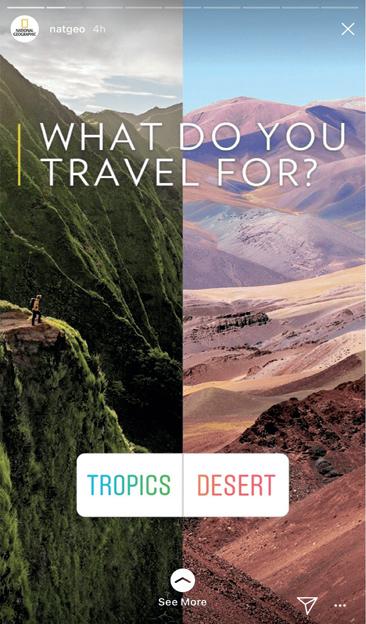
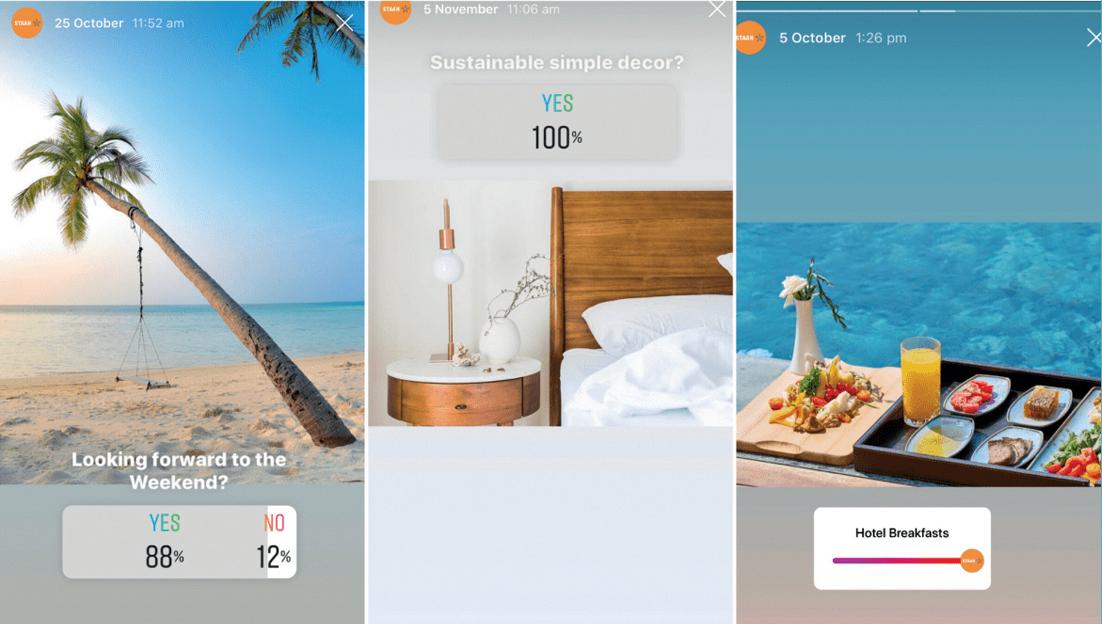
Another essential part of defining a marketing strategy is market research. This is the collection of data from various sources in order to obtain information regarding the needs and wants of customers and the structure and dynamics of a particular market. Market research can be carried out directly by the organisation itself or through an independent market research company.
There are two types of data sources:
PRIMARY DATA (also known as field research) This is research that is conceived for a specific objective and is collected first-hand from customers. Examples of primary research methods include face-to-face, online and telephone surveys, questionnaires and interviews, as well as focus groups. This form of research provides specific data which is extremely relevant to the company. The sample size interviewed must be large enough to provide data that accurately reflects the market, which makes it an expensive and time-consuming option.
Social media polls, available on platforms like Twitter and Instagram Stories, are a popular way for companies to gain some further insight into what their target audience thinks or feels. Obviously they are a much cheaper and quicker method than a face-to-face survey, or even an online one, and, as they are interactive, people are more likely to engage and want to share their opinion. Multiple choice works well because it is easy to analyse and act on the results, but allowing the possibility to leave comments means that other potential issues can be identified.
SECONDARY DATA (also known as desk research)
Secondary data is existing information so it is a cheaper and quicker source than field research, especially as so much is available online nowadays. However, it is important to check how up-to-date, accurate, reliable and relevant to the specific needs the information actually is. Secondary data can be internal to the company, such as customer and sales records, or external, for example statistics from UNWTO, national governments, trade organisations, the trade press and academic journals.
1 MEDIATING TEXTS Read the text and complete the mind maps.
PRIMARY DATA
Examples: advantages disadvantages
SECONDARY DATA
Examples: advantages
disadvantages
2 11 Listen to an exit survey carried out in a UK airport and decide whether these sentences are true (T) or false (F).
T F
1 The passenger travelled to the airport by bus.
2 He is travelling alone.
3 He was in the UK to visit friends and family.
4 He spent more than two weeks in the UK.
5 He has bought some food or drink at the airport.
6 He thinks the airport doesn’t have enough seating.
T F
Most of the data used in market research is presented in different types of tables and charts in order to make it easier to understand and quicker to compare results, trends and forecasts. The most common forms for presenting data and statistics are:
LINE GRAPH This type of graph shows trends or changes over a period of time, particularly when the changes are small, with a horizontal axis (x) which shows time and a vertical axis (y) which shows different data, for example the number of visitors, sales or income.
TABLE This shows numerical data in columns and rows.
BAR CHART This uses horizontal or vertical bars to compare things between different groups and also to follow changes over time.
PIE CHART This is a circle, divided into segments, which shows parts of a whole and does not show changes over time.
1 Match these sentences to the correct chart.
1 Analysing 2021, we can see that the biggest motivation for travel to the UK was ‘Visiting Friends and Relatives’.
2 The highest numbers of visitors to the UK in 2021 were in the third and fourth quarters of the year.
3 In 2021, the number of international tourist arrivals peaked in different months for Italy, the UK and the USA.
4 The majority of Italian visitors to the UK in 2021 visited London.
1 What does the graph represent?
2 What is the most common length of trip for those doing an English language course?
3 And for all visitors?
4 How does the percentage of visitors who stay for more than two weeks compare between the two categories?
Inbound visitors to the UK who undertake an English language course
Promotion, the last P in the marketing mix, is the element of marketing which is most obvious to the general public. The decision about which promotional method to use to publicise a product or service and to raise customer awareness depends on many factors such as costs and resources, timing and objectives. Promotional activities can be divided into two categories depending on the audience they are directed at.
• Business-to-consumer (B2C): aimed at the general public, such as a National Tourist Organisation promoting its country or a hotel selling spa breaks.
• Business-to-business (B2B): directed at other businesses to inform them about the company and to promote its products and services, such as a tour operator or chain of hotels promoting themselves to a travel agency.
ADVERTISING One of the main forms of promotion for all sectors, advertising plays an important role for the hospitality and tourism industry. Advertising campaigns can be created and planned in-house or, more normally, by an advertising agency which follows all aspects of the campaign from the creative work to the media planning and buying. The choice of media for a campaign depends on several factors including the size, nature and location of the target market, the product or service to be promoted and the budget available.
Remarketing is the term used when a company, through the tracking of Internet activity, can show targeted ads to users who have previously visited the company’s website.
• PRINT: international, national and regional newspapers; general and special interest magazines; trade press (used by B2B advertisers).
• BROADCAST: television, radio and cinema.
• OUTDOOR: billboards, posters, street furniture; electric signs in the street, shopping centres, airports, stations and on public transport.
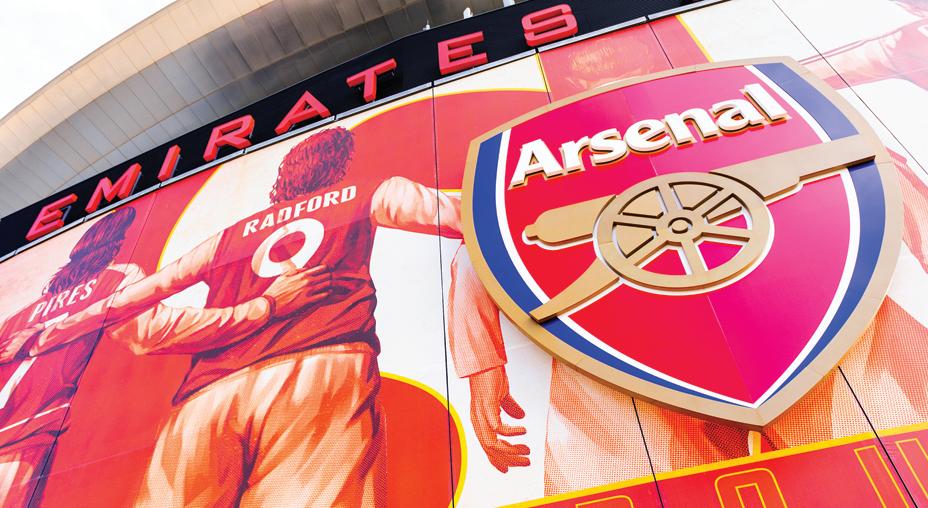
• DIGITAL: such as banners, pop-up ads, pay-per-click advertising and remarketing* on the Internet.
SPONSORSHIP With this kind of promotion, a company provides money or other kinds of resources to an event, activity or organisation in exchange for the inclusion of the company name and logo on promotional material and at the event itself. This is normally reserved for global operations like airlines, who often sponsor football teams or major events like the Olympics.
Do you know of any important tourism fairs?


Participation in these events is an important publicity measure used to promote a destination or company. Having a stand at a trade fair not only helps businesses and organisations to make numerous new contacts but also helps them to stay updated on industry trends and prepare for the future, as well as to check out what competitors are doing. Some trade fairs are only open to trade visitors, that is companies and professionals in the sector, as well as the press, while others are also open to the general public.
FAIRS AND EXHIBITIONS
SALES PROMOTIONS The use of vouchers, discount coupons, special offers and loyalty incentives is widespread in the travel and tourism industry. These promotions can be aimed directly at the customer, such as a money-off coupon by a hotel or air miles and frequent flyer programmes offered by airlines. When these incentives are directed at trade intermediaries, they can be things like extra commission, bonuses or free trips for travel agents. Circular letters are a common way of informing both customers and intermediaries about current promotions and offers.
POINT-OF-SALE MATERIAL The travel and tourism industry also relies heavily on brochures, leaflets and other informative material which are made available to potential customers at places like travel agencies and tourist information centres, as well as online on company websites. A tour operator, for example, will produce a brochure for package holidays to a particular destination, showcasing all the resorts, hotels and facilities, with details of prices, dates and conditions.

Free Gift Hampers For all Ph:(098) 766 000 123 www.bestcompany.com
1 Read the texts on pages 52 and 53 and say which promotional method(s)…
1 is suitable for B2B promotion?
2 is usually only for large companies?
3 offers the chance to meet potential customers face-to-face?
4 can require the expertise of an agency?
loyalty incentives premi fedeltà relies on fa affidamento su
5 contains a lot of printed information?
6 allows a company to monitor the competition?
7 is probably the most commonly-used method for the tourism industry?
8 relies on digital technology?
2 Complete the mind map on the FLIP BOOK with details from the text.
3 12 P Listen to an advertising executive talking about some of the different media used in advertising campaigns and complete the sentences.
Two types: a campaign for a specific product or service; a (1) campaign promoting the company or brand as a whole. TV campaigns by holiday companies often start on (2) . Companies must select the TV channel or programme with the correct (3) for their target. Viewers can ignore TV ads thanks to new (4) . An advert in a magazine has the benefit of visual impact and lots of (5) Depending on the (6) , the target market of outdoor ads can be more specific.
4 NEGOTIATING DECISION MAKING In pairs, decide which form(s) of promotion you would choose for these situations.
• An independent travel agency that needs to increase visibility and sales.
• A tour company that wishes to promote adventure tours and trekking in New Zealand.
• A tropical island resort that wishes to increase its profile and the number of visitors.

Just as content generated by a company or organisation can spread rapidly on social media, so can any user-generated content, like a review on TripAdvisor or a complaint on Twitter. Word-of-mouth recommendations have always been an important part of promotion for tourism companies, but this new ‘digital word-of-mouth’ is difficult to regulate and is often considered more reliable and credible than it actually is. User-generated content can significantly affect how successful and competitive a business is. For this reason, it is essential to monitor these platforms constantly and to reply as quickly and efficiently as possible to avoid or limit negative publicity (see pages 214-215).
engage coinvolgersi retained memorizzata
A large percentage of the population nowadays is computer literate and has easy access to the Internet, so digital marketing has incredible potential. The evident advantages are its global reach, 24/7 availability and speed. In addition, it offers many opportunities for personalisation and it is easy to track the success of the different methods and conversion rates. However, it is also a rapidly changing environment with new developments and passing trends, so it is vitally important to adapt quickly to change.
A company, whether small or large, private or state-owned, can start with having its own WEBSITE and being present on the websites of national and regional tourist organisations, trade bodies and other portals relevant to the sector. A company can use the digital advertising methods already mentioned, however, techniques like search engine marketing and, even more so, content marketing are much more effective at improving the visibility of a website. SEA (search engine advertising) is when a company pays for its website to appear under the sponsored results section of a search engine, such as Google, when determined search terms are used. SEO (search engine optimisation) aims to increase the natural position of the website in the results page. Content marketing, an important factor in SEO, is about growing the company brand by providing potential customers with relevant and valuable information on websites, blogs and newsletters.
A company or organisation can build a SOCIAL MEDIA PRESENCE and develop APPS that can be downloaded. With these tools, advertisers are able to form a more direct contact with consumers, especially young people, creating a global community around a brand or product with consequent positive effects on sales and brand identity. Another advantage of social media is how quickly messages can be spread, getting millions of views, likes and shares in a matter of hours. Many social media platforms, like Snapchat and Instagram, are basically visual media so content must be visually appealing in order to get customers to engage. In addition, research shows that information which is seen is retained longer than that which is heard. This is good news for the tourism sector with all the visual elements it can promote, from stunning locations and incredible scenery to luxurious hotel rooms and infinity pools.
Direct marketing has also become easier. DIRECT AND PERSONALISED EMAILS can be sent by using email addresses on a company’s database and are more likely to be well-received than generic emails. MOBILE MARKETING , given the huge number of smartphones and other hand-held devices and the amount of time users spend on them, is a great means of reaching a massive, but at the same time, targeted audience. This can be through SMS, push notifications, QR codes and location-based marketing.
1 Read the texts and answer these questions.
1 What are the advantages of digital marketing for a company?
2 How can social media and apps help a tourism company?
3 Why is mobile marketing beneficial for companies?
4 How can user-generated content be positive and negative for a company’s image?

TikTok is one of the most downloaded apps and has over one billion users in the world. It is certainly a young people’s app, but this is mistakenly thought to mean only teenagers while in fact three fifths of its users are aged between 17 and 30. In addition, TikTok is sometimes considered to be just for entertainment when actually it is a powerful marketing tool and one that companies in the travel sector should be using because the 17-30 age group is an extremely desirable audience – the next generation, ready to travel and explore after the restrictions of the Covid-19 pandemic.
Video content stands out in search engine results – there is often a separate section to highlight videos related to a search – and companies in the travel industry, whether that is a tourist board, a tour operator, resort or airline, are the best placed to create incredible video footage. They are likely to already have longer promotional videos, perhaps for YouTube, which can be perfect to cut up into intriguing segments for an initial trial on TikTok. For a purpose-made TikTok campaign, there are a couple of possibilities for creating content. One is to move away from the perfection of the ‘glossy brochure’ style of advertising and instead tell an engaging story, showing authentic and unfiltered experiences that appeal to this new generation of travellers. Often the focus is on sustainability and responsible tourism – key factors for today’s tourists.
The alternative, which is the typical style many expect from TikTok videos, is to create meme videos, where the right music and current cultural references are vital. Often there is even trolling of other companies and competitors. Low-cost airline Ryanair is an example of this: it grew from 45k TikTok followers at the end of 2020 to 1.6 million in 2022 thanks to meme videos and trolling. Having said that, TikTok is a fast-moving app so you need to keep up with trends and have a social media marketing team that is really on the ball in order to be successful. However, it is important to stay true to your brand image.

2 INVALSI Read the article and match the two halves of the sentences. There are two extra endings that you do not need.
1 TikTok isn’t only for
2 Travel companies should use TikTok
3 Companies can use
4 TikTok videos shouldn’t use
5 Young people are interested in
6 It’s difficult to succeed on TikTok without
a polished and perfect images all the time.
b teenagers and entertainment.
c as part of their marketing and promotion.
d competitors’ content.
e existing promotional videos or new content.
f to increase the number of followers.
g an excellent marketing team.
h sustainable and responsible tourism.
TEAMWORK ORGANISING Work in small groups to analyse travel apps and their usefulness. Each group should choose two travel apps from a similar category (e.g. airport apps, route planning apps) and should:
• examine the features, information included, languages available and ease of use of the apps and prepare a table with the information;
• consider the limits and the benefits of the two types of apps, both with specific reference to the apps analysed and in general;
• prepare a written report with their findings and opinions.
Look at the images in these ads. What feelings do they create? Do they appeal to you? Why/ Why not?
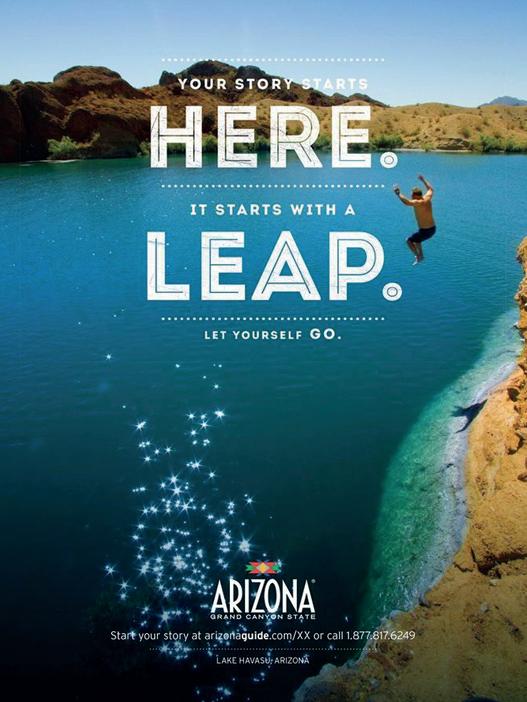
Read the slogans and body copy in the ads. Why do you think they have chosen these styles? Are they effective? What language devices have they used?

Given that we are surrounded by advertising in all aspects of our everyday lives, it is important that an advert catches our attention. It can do this with the skillful use of images and language. Images are extremely powerful and capable of creating a myriad of emotions. They can create the desire to visit a destination or to buy a product or service. An image needs to be carefully chosen to reflect the service or destination, making a beach location seem like a tropical paradise but at the same time accessible to the reader, an adventure tour exciting but not too dangerous, a package holiday cheap and fun but still of a high quality. Language is essential for the success of an advert and can be used to attract, seduce, persuade and inform. The amount and style of language depends on the type of advert and the media it is designed for. A corporate ad for a tour operator, promoting the company name rather than a specific holiday or location, might just use a powerful and easy-to-remember slogan, leaving the image to speak for itself. Alternatively an ad promoting a specific destination or package deal will probably have a longer text, known as ‘body copy’, with description and details, for example. Verbs are often in the imperative form to encourage action and the words ‘you’ and ‘your’ are used to make the reader feel involved and already part of the experience or holiday. Hyperbole – the use of exaggeration as a rhetorical device – is common, but care must be taken to avoid common clichés and expressions that lack originality. Other devices, such as alliteration, assonance, similes, repetition, metaphors and wordplay can help reinforce the message. However, humour and cultural references must be used with caution, especially in international campaigns, as the effect can be different depending on the country.

A regional or national tourism organisation often creates a brand for the destination, with a logo and slogan in order to increase awareness of the destination and what it offers to tourists. A country or city is made up of many different products or services, but presenting it under one brand and creating a single brand identity has many advantages in making a country more attractive and recognisable on a global scale. The brand can usually be used by different tourism companies in the country in their adverts, promotional material and websites, as well as on merchandise for tourists.
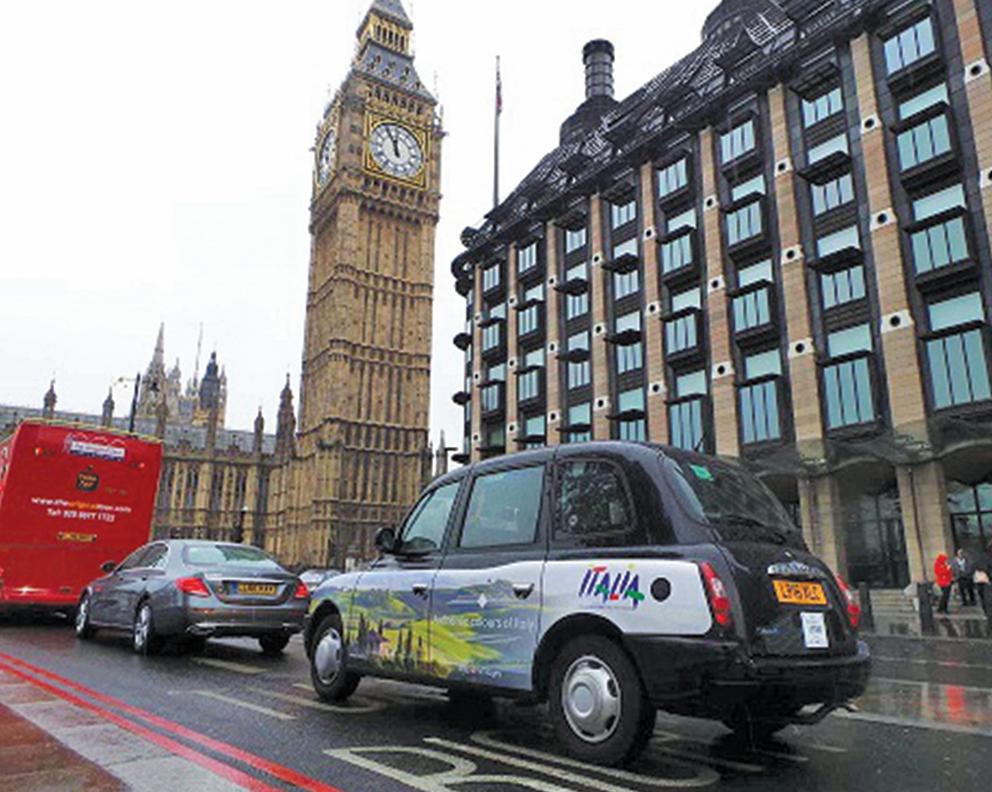
1 Read the text on page 56 and use your own words to complete these sentences.
1 Adverts should be designed to…
2 The purpose of an image is…
3 The length of the text in an advert can depend on…

4 The word ‘you’ is used frequently because…
5 Hyperbole should be used carefully because…
6 International campaigns should pay attention to…
2 Complete the slogans using the words in the box and then match them to the most suitable company. drive recharge sleep ticket
1 Your to paradise!
a A ferry operating between the UK and Holland
2 Get away from it all and your batteries! b A mid-range hotel chain
3 The best night’s . Guaranteed.
c An airline flying to the Seychelles
4 Why when you could sleep all the way there? d A five-star luxury hotel in the Swiss Alps
WRITING PROMOTIONAL ADVERTS
Verbs enjoy escape get away from
discover appreciate admire
Adjectives breathtaking unforgettable unique
perfect exquisite once-in-a-lifetime
Nouns fun adventure relaxation
3 CREATIVITY In small groups, think of slogans for the following companies.
1 A tour operator selling package holidays to the USA.
2 An airline’s first class service from Australia to the Middle East.
3 A company with family-friendly campsites and caravan parks across Europe.
4 Watch this video promoting Chile and discuss these questions in pairs/class.
1 What natural features and landscapes are shown?
2 What sports and outdoor activities can you see?
3 What about opportunities for sightseeing and culture?
4 Why do you think they have used tourists speaking different languages?
5 Do you think the music is effective? Why/Why not?
elegance style paradise
freedom choice beauty
luxury dream discovery
6 What is the slogan and do you think it connects well with the content of the video? Why/Why not?
7 Does this video make you want to visit or find out more about the country?
TEAMWORK CREATIVITY Work in groups to design a 30-second TV advert for one of these situations. Decide on the images, written and spoken texts/dialogues, slogan, music and any other details.
• The tourist board of a tropical island wants to promote its image.
• A theme park or attraction, ideal for family days out, wants to increase the number of visitors.
• A tour operator wants to promote its ecotourism holidays in South America.
• An airline wants to promote its new route to a city with a rich cultural and historical heritage.
Promotional materials like leaflets and brochures can be printed and distributed to customers or made available online or on apps. As they are a form of advertising, the language used in both leaflets and brochures needs to be promotional and persuasive so that readers are drawn in and can imagine themselves on the holiday or visiting a particular place.
A LEAFLET , often found in hotel lobbies, train stations and tourist information centres, is a folded piece of paper used to promote towns, tourist attractions, guided tours or trips. There is usually a short overview or introduction of the place or itinerary and a selection of photos. Additional descriptive text might contain some background information, cultural and historical references or details of the itinerary. To help the reader decide if the offer is suitable for them, the leaflet should include practical information, such as location, a map, facilities, accessibility, opening times, prices and contact details.
1 Read the texts and answer these questions.
1 What do leaflets often promote?
2 Why should they contain practical information?
A BROCHURE , often handed out in travel agencies or consultable online, usually contains an introduction to the company, maybe with its history, experience and business ethics (e.g. sustainable tourism). There are then descriptions of the destinations, hotels, resorts, cruises or itineraries, illustrated with beautiful photographs of the locations, rooms, facilities and so on. Dates and prices are included in easy-to-read tables, while things like facilities are indicated with symbols. At the end of the brochure, you can normally find the terms and conditions.
3 Where can you find brochures?
4 What are the main features of a brochure?
2 Look at the leaflet for Harry Potter Studio Tour, UK. Which of the features mentioned in the text does it contain?

Leave your muggle life behind and discover a world of wizardry and magic on this tour of the studios where the Harry Potter films were made. Follow the footsteps of your favourite character down the cobblestones of Diagon Alley; admire the Great Hall with its props and costumes from the different Hogwarts houses; learn about the special and visual effects used to create the magic and even have a go at flying on a broomstick. The tour lasts around 3 hours, but leave plenty of time to look around the souvenir shops – full of wands, magic potions and chocolate frogs – and to get something to eat or drink in the café.
How
Studio Tour Drive
Leavesden - WD25 7LR
Free car parking on site
Free shuttle bus from Watford Gap train station (20 minutes from London Euston)
Opening Times and Tickets
These vary during the year so please check online for the date you would like to visit.
www.wbstudiotour.co.uk


Please note some areas of the original film sets are not wheelchair accessible.
3 Read the description and underline the words and expressions which you feel make the text appealing.
To modify gradable adjectives (good, interesting, expensive etc.), we can use adverbs like really, very and extremely
The resort is extremely beautiful
The food is really good and very cheap.
To modify non-gradable adjectives (excellent, amazing, unique etc.), we can use adverbs like really, completely and absolutely
The tour was absolutely amazing and worth every penny.
When using more than one adjective, they usually follow this order, but it is very unusual to use more than three adjectives together. General opinion Specific opinion Size Shape aGe colour nationality Material purpoSe
The hotel rooms are decorated with exquisite 19th-century Italian antiques.
We are an independent Scottish tour operator.
4 Read this extract from a holiday brochure and replace the expressions in bold with those in the box to make the text more appealing. More than one answer may be possible.
a multitude of colourful crystal clear exciting experience extravaganza fun and adventure
soak up the sun spot stunning velvet-soft the best ever location
thrilling trendy
Leaflets
• A great day out for all the family.
• A unique place, something for everyone.
• There’s so much to see and do.
• The ultimate adventure park experience.
• A magnificent day out.
• Explore Italy’s greatest museum/ archeological site/art gallery.
Florida is a nice place to go for a holiday. The Keys give a tropical feel with their lovely smooth beaches, clean water and an underwater show of pretty fish and coral. An airboat ride is a good way to visit the Everglades where you can see alligators, manatees and many birds and insects.
Miami and SoBe are the coolest places to see and be seen. You can sunbathe, find nice shops, art galleries and even get a taste of Cuba in Little Havana. Orlando offers entertainment for all the family, with interesting theme and water parks where everyone can have a magical time.
• The perfect opportunity to experience life as a local with our exclusive tour of…
• Discover a colourful, magical place filled with…
• Marvel at the incredible nature as you wander through the uncontaminated forest.
• A myriad of surprises await you on board our ship.
• Admire spectacular sunsets from your balcony…
• Explore the underground/underwater treasures in this truly amazing place.
5 Using exercise 4 as a model, write a short introductory text for a leaflet promoting your region to foreign visitors.
TEAMWORK PRESENTING In small groups, have a look at some brochures and leaflets from your local tourist office/travel agency or find some online. Choose two examples and analyse these aspects:
• the images and photographs used;
• the promotional language used;
• how useful the practical information is;
• the overall effectiveness as a promotional tool;

• any aspects that you are not convinced by;
• how you would improve them.
Then prepare a short oral presentation to give to the class, with each member of the group explaining an aspect.
Apps like Moovit, Transit and Citymapper help you find your way around New York, London, Rome and many other cities around the world. You can calculate the best route using any form of public transport, as well as by taxi, bike and on foot.
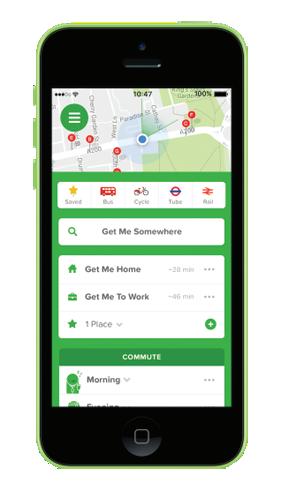
The development of apps like these has to take into consideration the limits of the device, such as screen size, battery life and processing power, as well as the advantages offered by the built-in features, like the camera or GPS. And, just like for a website, user friendliness and appeal must be at the forefront of the design.
A website is a collection of web pages which are registered under a domain name. The web pages are documents, written in plain text and with formatting instructions in Hypertext Markup Language (HTML, XHTML), and navigation among these pages is through hyperlinks. The home page, where a user is usually directed to by a search engine, is where the site map can be found. This allows the user to see the structure of the website and to use the navigation tools to move around. website is structured can vary, but as a user seldom accesses the web pages in a linear order, it is important that there is a main navigation menu, with sub menus as well as links embedded in the content of pages, to enable quick and easy movement among the pages. For example, after clicking on an online ad or a link on social media, the user is directed to a landing page, not necessarily the homepage, and so the navigation menus must be clear also from this page. A website is a vital marketing tool nowadays for any tourism and hospitality business or organisation, and with so much competition, it is important to get it right. Firstly, it needs to be easy to navigate and user-friendly. When people are looking for something specific, they want to be able to find it quickly; if they are just browsing, the options available have to be clear. Good visual design with use of colour, graphics, static and dynamic images will contribute to this and also add a ‘wow’ factor, highlighting the quality and professionalism of what is on offer. The language needs to be carefully considered too, with persuasive and appealing content, as well as short and clear texts for the practical elements. In addition, a website has to work well across different devices (PC, smartphone, tablet). Other features will depend on the exact nature of the company or organisation, and may include:
• interactive maps
• photo gallery
• 360° videos
• booking engine to search availability/price and to make direct reservations

• search facility with possibility to list results according to different criteria (e.g. price, distance, rating)
1 Read the text and answer these questions.
1 Why are navigation tools an essential feature on a website?
2 What aspects of the visual design of a website are important?
2 Match the words to the correct definition.
1 domain name
2 user-friendly
3 home page
4 landing page
5 booking engine
• customer reviews
• secure and easy-to-use payment system
• a favourites list
• the option to sign up for newsletters
• social media links
• different languages
• FAQ page
• live chat
3 What about the language used?
4 Why do you think a website should work well on different devices?
a a web page that a user is sent to from a link on another website
b the introductory page of a website, usually with a presentation and index
c easy to understand and use
d a software application used to make online reservations in real time
e the unique name that identifies a website
3 Match the words in the box to the correct part on the web page.
domain name link main navigation menu drop-down menu search box social links home page button shopping icon (basket) slide show
4 Look at the web page in exercise 3 and discuss these questions in pairs.
1 What is the purpose of the website?
2 Who do you think the target audience is?
3 What options are on the main navigation menu?
4 What options are on the drop-down menu under ‘Book Your Stay’?
5 What options do you think there are under ‘Shopping’ and ‘Food & Drink’?
6 Are there any e-commerce possibilities?
7 Are there any links to social media?
8 Is the content available in different languages?
5 Using the above questions as a guide, write a short report describing the visityork.org website, its aims, the structure, contents and your opinion on its design and usability. You can go online to see an up-to-date version if you wish.
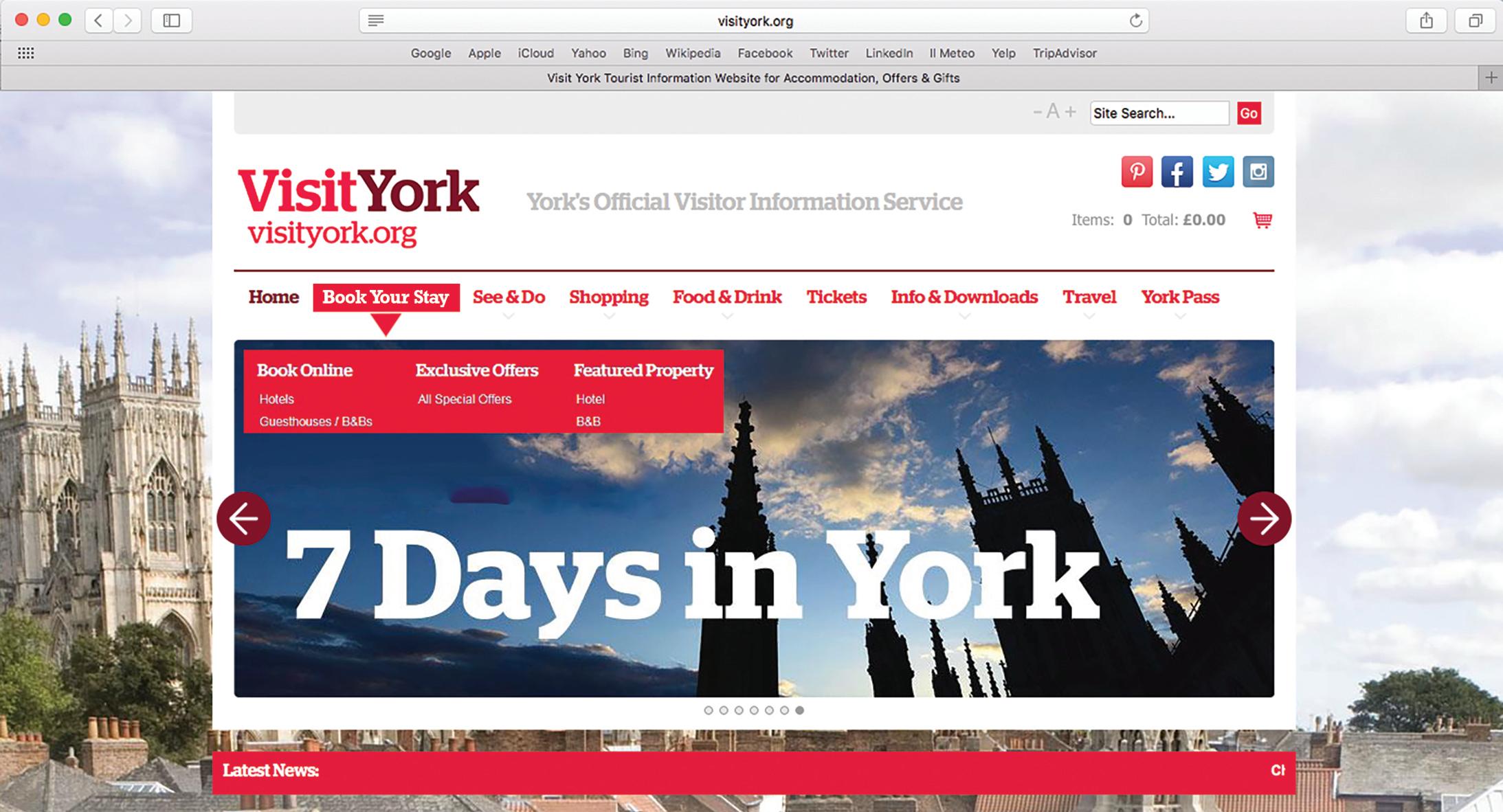
6 Go online and look at some examples of websites for tourism and hospitality companies with options to book or purchase online (e.g. a hotel, airline, tour operator, tourist attraction). Take notes on these areas:
• layout of home page and first impact
• structure of the site and ease of navigation
• information included
• search facility and results
• booking and payment systems
7 Now use this information to write a report describing how you would plan a website for a tourism company wanting to sell its products/services online.
A circular letter is used when a company needs to inform all its clients about a change or important event in the company. In the tourism and hospitality industry, they are used as a marketing tool (sent by post, email or fax) to inform a large number of clients, current and potential, about a new product, service or special offer, while at the same time reminding them about the company and keeping its name first in their minds.
Newsletters are similar and are sent periodically to past and potential customers on a company’s database as a form of promotion. Given that circular letters and newsletters are a combination of a business letter and advertising, there are various points to remember.
• Use mail merge systems to personalise each letter with the customer’s name. Alternatively use Dear Valued Customer, Dear Travel Agent etc.
• Only introduce the company if writing to a new customer. Otherwise just a reminder of your experience, quality, years of expertise or strengths is sufficient.
• The first line should attract the readers’ attention.
• Present the new product or service, pointing out the main aspects, but be brief.
• Refer to any introductory offers or special deals.

• Encourage contact by repeating the contact information (website, emails, telephone numbers or contact names).
1 Read the text and circular letter and answer these questions.
1 Why might a company need to send a circular letter?
2 In what way can a circular letter be a form of marketing?
3 What details of a circular letter are more similar to an advert than a business letter?
Dear Travel Agent, Are your clients tired of the same winter ski resorts in France and Austria? If you are looking for something a little different, Livigno in the north of Italy is the ideal place for you. Situated close to the Swiss border at 1,816 metres, Livigno is suitable for beginners as well as expert skiers, and there is fantastic cross-country skiing too.
As you are aware, Snow and Slopes has over 15 years’ experience in European winter holidays, so we are pleased to add Livigno to our comprehensive offer of Italian ski resorts for the forthcoming winter season. With the long season and reliable snow cover, we are sure your clients will appreciate all it has to offer and the extremely reasonable prices too, with one week half board, including flights and transfers, starting at £850. For bookings made before the end of September, your clients can take advantage of the 10% advance booking discount.
All the details can be found in the enclosed brochure and online at our website www.snowandslopes.uk but please do not hesitate to contact us for any further information.
We look forward to hearing from you soon. Kindest regards,
Max Williams Snow And Slopes Ltd4 Who is the above circular letter from?
5 What kind of company is it?
6 What does it want to promote?
2 Read this newsletter and put the paragraphs in the correct order.


Dear Mr Mason,
■ As a valued past customer, you know our aim is to provide the best in adventure in the Southern Hemisphere and that all our tours have been personally tested and selected to offer you the very highest quality and most amazing experiences. This tour can be stand-alone or added to any of our other packages for New Zealand or Australia, just contact us for availability and dates.
■ Join us to experience the natural wonders and hidden delights of New Zealand’s South Island with our 10-day off-the-beaten track tour.
■ Please click on this link to see a short video to inspire you and we look forward to welcoming you again on one of our tours in the near future.
■ We will take in the wine growing region of Central Otago and the remote Stewart Island to see its rare native birds. A highlight is the helicopter ride from Milford Sound across the fjords to the wilderness of Martins Bay. Accommodation is in lodges, welcoming and full of character. Groups are limited to 12 people in order to keep the experience intimate and personal.
Yours sincerely,
Jillian Ewans Wild Tours3 Translate these sentences and write them under the most appropriate function. Then add the examples from the two letters on page 62.
1 In allegato trova un catalogo che illustra tutti i pacchetti disponibili per la prossima stagione.
2 Speriamo di poter presto accogliere i vostri clienti.
3 Con più di vent’anni di esperienza nell’organizzare viaggi in pullman…
4 Operiamo in questo settore dal 1975.
5 Il nostro staff altamente qualificato spera di potervi accogliere presto a bordo.
6 Per vostra informazione, alleghiamo il nostro catalogo più recente con i dettagli di tutte le offerte speciali.
DESCRIBING YOUR COMPANY ENCLOSING MATERIAL ENCOURAGING CONTACT/CLOSING
PASSEPARTOUT PCTO
WRITING CIRCULAR LETTERS AND NEWSLETTERS
Attracting attention
• Are you looking for a special holiday?
• Are you planning your next holiday?
• Are you/your clients fed up with…?
• Tired/Bored of the same…?

• Have you ever wanted to try/ experience/see…?
• Have you ever thought about…?
• We know you/your customers expect the best/are looking for something special.
• Experience the delights/wonders/ natural beauty of…
Giving details
• We would like to draw your attention to…
• We are delighted to tell you about…
• It is with great pleasure that we announce…
• We have added three more guided tours for the next season.
• The accommodation has been carefully selected to offer you the best in local hospitality.
• Dedicated to the younger members of the family/the winter sports enthusiasts, we have developed…
Referring to prices and special deals
• As you can see, the prices are extremely reasonable.
• Book now and enjoy our early-bird discount of 15%.
• Bookings made before the end of the month qualify for a £250 discount.
• There are several pricing options available to satisfy all your customers.
• As one of our valued customers, we are delighted to offer you a 10% discount.
• This special introductory offer is available until 30th June.
4 You work for a chain of business hotels in Europe. Write a circular email to send to companies and travel agents to inform them of your new hotel near Milan Malpensa Airport. Include these points:
• free Wi-Fi in all rooms, large desk, USB sockets
• free shuttle service to airport
• meeting and conference rooms available for hire
• two restaurants, wine bar and terrace café with panoramic views
5 MEDIATING TEXTS You work for a hotel on Lake Garda. Your boss has sent you this email. Write a newsletter to send to your previous and potential customers in the UK following the instructions.
Dobbiamo promuovere l’albergo presso la clientela britannica – sia i vecchi clienti che tutti quelli che ci hanno contattato per informazioni. Devi spiegare i lavori di ristrutturazione fatti recentemente: la nuova piscina e i 40 mini-appartamenti con angolo cottura e giardino privato o balcone, perfetto per le famiglie, che abbiamo aggiunto. Non dimenticare di sottolineare l’ottima posizione in riva al lago. Possiamo offrire il 15% di sconto per soggiorni di 7 giorni ad aprile e maggio, con un tour enogastronomico di mezza giornata incluso nel prezzo.
Another way to promote a product or service is on the phone. Making a cold call – when you phone someone you do not know to try to sell them something – is certainly not easy but it might be necessary. However, you are more likely to need to make calls to people you already know and do business with to inform them about a new package or offer. The advantages of making a phone call are that it is immediate and you have instant feedback that you can follow up on for the future. On the other hand, a promotional phone call can be a disruption while someone is working and feel intrusive if the caller is too insistent.
• Have a clear idea of your objectives and plan the main points you want to say.
• Be courteous and pleasant.
• Highlight a few details of the company and product or service to create interest.
• Offer to send brochures and other material.
• Always thank the person for their time.
• Follow up the phone conversation with an email.
1 13 Amy Stephens, from the company Stars and Stripes, calls Roy Bolton at Sunset Travel. Listen to their phone conversation and decide whether these sentences are true (T) or false (F).
1 Mr Bolton and Ms Stephens have met before.
2 Ms Stephens is calling to promote a tour of the East Coast of the USA.
3 The type of trailer the customers will have is the selling point of the tour.
4 Mr Bolton is concerned about the cost.
5 Customers have no choice about where to start or finish their trip.
Introducing the reason for the call
• I know your clients are interested in… so I’d like to propose…
• I remember that you deal with/ organise/do a lot of business with… so I wanted to tell you about…
• Given that adventure beach holidays in the USA are the latest trend, I’m sure your clients will love our new proposal.
• I believe you will be interested in our new offer/package/guided tour.
Highlighting the selling point/Convincing
• Another excellent/unique aspect is…
• Don’t forget that we also include a free wine-tasting session/guided tour of the castle.
• What makes this special/ different/excellent value for money/appealing is that…
Asking questions about the product/service
• What makes your deal different?
• What does it include?
• Why should I change to using your services?
• How is it better than what I already offer?
Promising action
• I’ll pop some leaflets in the post for you.
• I’ll send you all the details by email.
• I’ll call you back to arrange a meeting.
2 COMMUNICATION In pairs, read the situation and act out the phone conversation. Sit back-to-back so you can’t see your partner’s face to make it more realistic. Remember to swap roles.
You work for a company which organises food and wine holidays in Italy and you want to promote a new holiday in Sicily, which is 7 days, half board, flights from Gatwick and Luton, and all transfers included. Highlights include three wine-tasting afternoons, a visit to the vineyards near Etna and a sightseeing tour of Syracuse. You can invent other details.
You are a travel agent and receive a phone call from a company promoting a new holiday in Sicily. Depending on what information the caller gives you, ask about what activities the holiday includes, the size of the group and the target market.
If you work for a company that attends fairs and exhibitions, it might be necessary for you to be part of the team on the stand, greeting and meeting potential business partners and clients or members of the public. Given the international nature of most fairs, it is likely you will do this in English or another foreign language. Whatever the size of the stand, it needs to have eye-catching displays, such as posters or screens, and promotional material like leaflets, brochures or gadgets to hand out. The people working on the stand need to be friendly and welcoming at all times.
• Have a pleasant manner.
• Smile and greet the visitor to the stand warmly.
• Be positive and have an enthusiastic tone of voice to create a rapport.
• Use a mixture of closed questions (for example ‘Are you interested in a cruise?’) and open questions (for example ‘What appeals to you about a cruise holiday?’)
Which of these things do you think is the most important? Why?
• Listen carefully so you can tailor what you say to the person’s needs.
• Be fully knowledgeable about the product/service/ destination.
• Where necessary, get contact details, such as a business card, to follow up the potential contact after the event.
1 The company Sunshine has a stand at a tourism trade fair. Watch this video of a marketing assistant talking to a potential client. Is the client a trade professional or a private customer? How often does the marketing assistant mention the name of the company? Why do you think that is?
Open questions
• Which areas are your customers most interested in?
• What’s your opinion on the trend for…?
• What type of product is most popular?
Handing out promotional material
• Would you like to take one of our brochures?
• Let me give you a leaflet which explains the tour/holiday.
2 COMMUNICATION In pairs, act out the following situation. Remember to swap roles.

You are at a trade fair to promote your company which specialises in luxury holidays and honeymoons in South Africa. Use the information on the right to help you promote your business.
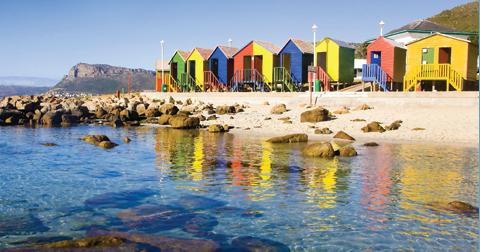
You are a travel agent and are visiting a trade fair to find new proposals for honeymoons. You see a stand on South Africa. Go and talk to the person to find out more.
Taking contact details
• Can I have your/Have you got a business card so I can send you some more details?
• If you fill in this form with your details, we’ll enter you into our competition.
Why not add a beach holiday in Mozambique? Custom-made honeymoons on request.

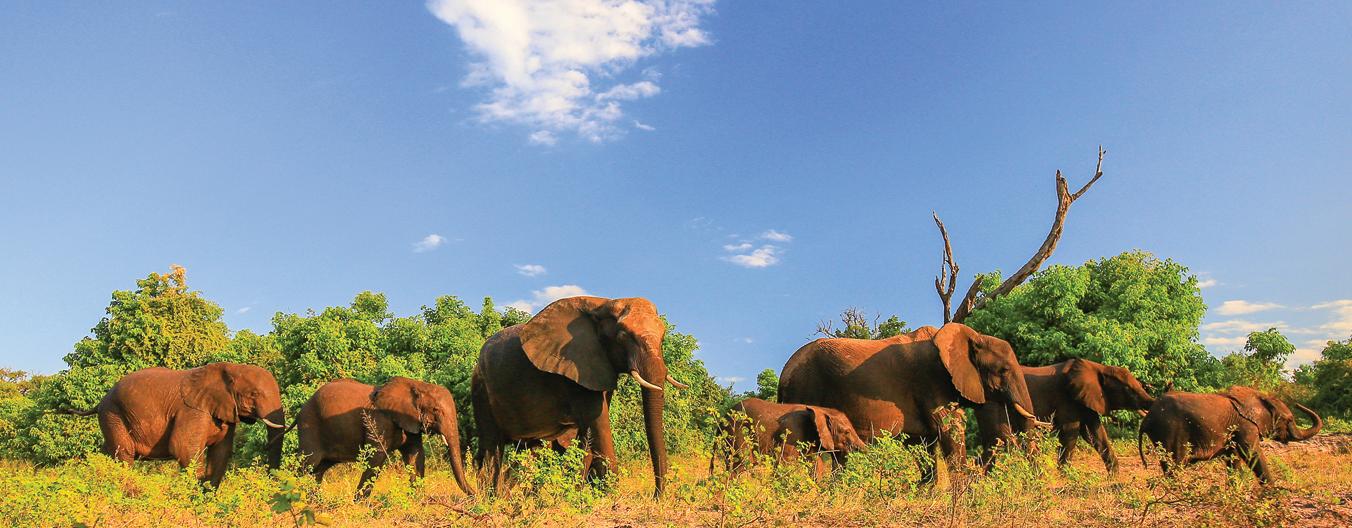
NOUN
advertisement/advertising analysis
attraction competition
creation
description development
identification
illustration information
personalisation
persuasion promotion research satisfaction
domestic/ international/ global market
competitive market
advertise analyse attract compete create describe develop identify illustrate inform personalise persuade promote research satisfy
market segmentation
VERB ADJECTIVE
–analytical attractive competitive creative descriptive developed/developing identifiable illustrative/illustrated informative personalised persuasive promotional –satisfactory/satisfied
newsletter
circular letter
exhibition
trade fair
sponsorship
MARKET
market share
market leader market research
marketing mix
focus group
questionnaire
survey
leaflet
loyalty incentive
website
brochure
advertisement
discount coupon
special offer
research
target audience
primary data
secondary data
life-cycle model
1 Look at the table on page 66 and choose a suitable verb to complete these sentences.
1 One of the purposes of advertising is to consumers to buy a product.
2 The fourth P of the marketing mix is how to a product or service.
3 In a leaflet you should some of the features of your tour or attraction, as well as giving practical information.
4 Both language and images are used in adverts to attention.
5 It is important to market research data in order to understand industry trends.
6 Marketing helps a company its target market and consumers’ needs.
7 Many companies use an agency to their advertising campaigns.
8 Direct marketing allows a company to emails and advertising sent to clients.
2 F Complete these sentences with the correct form of the words in brackets.
1 The of market research data is important to help develop an effective marketing strategy. (ANALYSE)
2 A text usually contains adjectives and appealing expressions. (DESCRIPTION)
3 The brochure doesn’t contain many or photos so it isn’t very interesting. (ILLUSTRATE)
4 In a SWOT analysis, strengths are resources and capabilities that can be used to develop a advantage. (COMPETITION)
5 Holiday companies often use people to advertise their products. (ATTRACT)
6 Well-made are crucial to the success of a TV or press campaign. (ADVERTISE)
7 When a tourist destination is at the stage of the life cycle model, it is beginning to become established. (DEVELOP)
8 Leaflets, brochures and circular letters are forms of material. (PROMOTION)
3 Complete the mind map with the types of promotional methods in the box.
4 Match these words to the correct definition.
1 intangible
2 pie chart
3 strength
4 threat
5 peak
6 objective
a the point of highest activity or achievement
b goal, something to achieve
c not able to be touched or possessed
d a good or beneficial quality
e the possibility of damage or danger
f a type of graph shown as a circle
5 Combine the words from each column to form common collocations.
1 market a friendly
2 SWOT b audience
3 advertising c identity
4 target d research
5 brand e campaign
6 user f analysis
Influencers connected to the world of tourism are all over social media like TikTok and Instagram. Their content, with beautiful images and short videos about their travel and holiday experiences, inspires their followers and creates new trends. Influencers, however, can have both positive and negative effects on a destination: they may promote lesser-known places to a wider audience, but sometimes their posts lead to a place becoming too trendy and overrun with visitors, with obvious negative consequences for the people living there and the environment. The photos posted have to hide the reality of hundreds of people queuing up to take their Instagram-worthy shot of a view or monument. The residents of Rue Crémieuz, an Instragrammable street of pretty and colourful houses in Paris, campaigned to have their street closed to non-residents at certain times of the day as privacy and peace had become impossible. ‘Travelling under the influence’ became so common in New Zealand that the national tourist authority created an advertising campaign with the hashtag #DoSomethingNewNZ, telling people not to ‘travel under the social influence’ and to avoid the cliché photos and poses, like lying spread-eagled on a mountain top or sitting pensively in a field of lavender. This campaign was actually aimed at the domestic audience, given that the country still had travel restrictions due to the Covid-19 pandemic, so it is not just foreign tourists that contribute to this phenomenon of copycat tourism.
Despite this potential negative aspect, companies within the travel and tourism industry are investing more and more in influencer marketing because of the potential reach of these influencers. It is very cost effective and a good method of attracting new customers and building brand awareness. Followers see influencers as trustworthy and reliable, especially when it is someone they have followed for a long time. They trust their opinions and recommendations much more than other sources such as news or tourism websites, and research suggests that between 40% and 75% purchase something that they have seen an influencer recommend. Online travel agencies, regional tourist boards, hotel chains and even companies producing products like suitcases or swimwear organise sponsorship deals and adopt influencers as ambassadors for their brand. Influencers are paid or get free trips, accommodation and products in exchange for promoting a company, but they have to indicate in the # that the content is sponsored. There is even an exhibition, IMM in London, which has a day dedicated to influencers so that they can meet tourist organisations and top travel brands in the hope of establishing new deals. And it is not mega-influencers – celebrities with millions of followers – who are getting the deals. Mid-tier (50k to 500K followers) and nano-influencers (1 to 10K followers) have a significant impact, especially on niche markets. For marketers, being associated with an influencer that comes, sees and influences is really the perfect combination.
1 INVALSI Read the article and answer the questions with no more than 4 words.
1 What content do tourism influencers post?
2 What makes Rue Crémieuz attractive to Instagrammers?

3 What did the New Zealand advertising campaign want people to do?

4 What are the advantages of influencer marketing? (2 answers)
5 What benefits do influencers get from influencer marketing?
6 What is the difference between nano and mid-tier influencers?
INeal’s Yard, one of the most Instagrammable places in London
2 Write two short paragraphs to explain:
1 what ‘market segmentation’ is;
2 what market research is and how it can be used to help promote holidays.
3 14 You will hear a promotional phone call between a tour operator and a travel agent. Listen to the conversation and decide whether these sentences are true (T) or false (F).
1 Rob and Tanya don’t know each other.
2 Tanya is promoting tours to Rob.
3 Rob isn’t interested in what Tanya offers him.
4 Tanya is happy at the end of the conversation.
4 14 Listen again and complete these sentences. Then match them to the functions they express.
1 I’m calling is to tell you about our new season’s tours.
2 Great! What have you got ?
3 It sightseeing of the city, a cruise of the Biscayne Bay and an Everglades Airboat Ride.

4 It sounds good – can you the details?
5 That expensive…
6 I everything to you today so you can look at all the information.
a giving reason for calling
b expressing doubt
c providing details
d requesting more information
e promising action
f showing interest
5 You are a tour operator specialising in family tours in your country. Write a circular letter to travel agents outlining your latest offers. In your letter you should:
• introduce yourself and provide some information about your company’s background;
• present your new tours, giving details of target customers, cost and schedules;
• explain how and where they can get further information.
6 COMMUNICATION Watch this video of a potential client asking a marketing assistant at a trade fair for information about their company. Read the prompts on the screen and take the role of the potential client.
7 Now watch the full version of the video and compare your answers.

8 COMMUNICATION CHARISMA In pairs, role play a similar conversation between a potential client and a marketing assistant at a trade fair. Remember to swap roles. Ask and answer about:
• the company’s role
• the main service(s) it provides
• the area(s) it works in
• its target customers
• its USP (Unique Selling Proposition)
• the price range
• how and where to find further information
Smartphones are sustaining a ‘bedroom culture’, with online access for many children becoming more personal, more private and less supervised.

digital divide divario digitale
Digital citizenship is the ability to use the Internet well to communicate with others, buy and sell things, take part in politics, and understand how to do this in a safe and responsible way.
Thanks to digital technology, it is easy to stay connected through social media and have access to lots of information. But it can be very challenging for young people to make sense of this wealth of information and engage with it effectively and responsibly.
About one in three internet users globally are under 18, mainly using mobile phones to go online. Research shows that children are accessing the Internet at increasingly younger ages. In some countries, children under 15 are as likely to use the Internet as adults over 25, making them the most connected age group worldwide.

However, the so-called digital divide is substantial: 346 million youth are not online, with African adolescents the most affected (60% are not connected compared with 4% in Europe). Young people who lack digital skills, live in remote regions, or speak a minority language are being left behind in making use of the opportunities that digital technologies can provide. Those accessing the Internet with a mobile phone rather than a computer may also get a second-best online experience.
The benefits of the digital world include access to education, training, and jobs, which can help break cycles of poverty. Access to news and information sources can help protect people’s health, safety, and rights. And being connected to friends and family can be good for people’s mental well-being and offer wider social circles than ever before.
Online hate speech is any online communication or expression which encourages or promotes hatred, discrimination or violence, against any person or group, because of their race, religion, disability, sexual orientation, gender or gender identity.
Trolling is making inflammatory or insincere posts to provoke emotional respsones or to manipulate people.
1 Read the text and answer the questions.
1 What is digital citizenship?
2 Why is digital citizenship important?
3 Who is going online and how?
Criminals have more access to young people through unprotected social media profiles and online gaming forums, which has led to increased child sexual abuse and exploitation. Young people are also at risk from sexting, sending or receiving sexually explicit photographs or messages via mobile phones, which can be shared without a person’s permission.
Cyberbullying is the new method for bullies to hurt their victims by posting words and images online, which are difficult to delete and aim to embarrass or hurt people.

There is also a lot of concern about the amount of time young people spend using digital technology and the effect on their physical and mental health.
Online harassment is repeated attempts to contact or send unwanted communications to someone.
Baiting is to make a person angry by saying or doing something insulting or annoying.
Virtual mobbing a form of intense cyberbullying when a group of people agressively target and intimidate a person online.
4 Who isn’t going online?
5 What are the benefits of the digital world?
6 What are the risks of the digital world?
2 CRITICAL THINKING Write a list of all the things that you do online. Then put them in the correct categories. Compare your answers in pairs.
Benefits
online courses
Risks & Benefits
using social media
Risks
sharing personal data
3 EMPATHY One third of young people have encountered hate speech online. Discuss your experience in groups. How did you feel? Could you stop it? How should you behave online?
4 15 Listen and choose the correct alternative to complete the information about online privacy.

1 Don’t reveal / Reveal a lot of information about yourself.
2 Don’t switch / Switch your privacy settings to only show social media updates to friends.
3 Forget / Remember who you’ve friended.
4 Delete / Don’t delete your browser history and cookies regularly.
5 Don’t retype / Retype the URL of a website in your browser.
6 Don’t link / Link all your online accounts to one email address.
7 Don’t use / Use the same password all the time.
8 Don’t use / Use a password manager.
5 Read and match each heading to a description.
1 Click away from the story to investigate the site, its mission and its contact info.
2 Headlines can be crazy just to get you to click. What’s the whole story?
3 Do a quick search on the author. Are they credible? Are they real?
4 Click on those links. Does the information actually support the story?
5 Re-posting old news stories doesn’t mean they’re relevant to current events.
6 If it is too crazy, it might be satire. Research the site and author to be sure.
7 Consider if your own beliefs could affect your judgement.
8 Ask a librarian, or consult a fact-checking site.
a Ask the experts
b Check the author
c Check the date
d Check your biases
e Consider the source
f Is it a joke?
g Read beyond
h Supporting sources
6 Do some research into a fake news story online. See if you can find a story that the rest of the class believe in and then show them why it is fake news.
Here are some simple rules about how to stay safe, happy and healthy on your smartphone.

1. Don’t let your smartphone own you –you own it!
The problem Today many people can’t live without their phones. They are in the‘cyber world’ more than the real world. This isn’t a very healthy way to be.
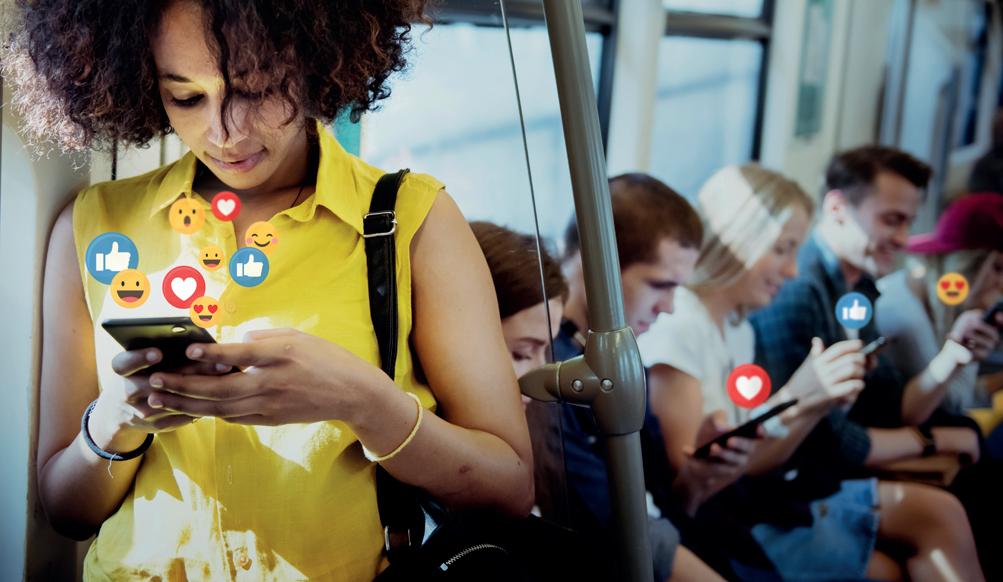
The answer Take a break! Put your phone down and do a fun activity outside with your friends or family. You can use your phone for important messages and to keep in touch, but it’s important to live in the here and now.
2. Stay safe!
The problem The information on your phone isn’t always safe. People can change, use or steal things from your phone.
The answer Keep your passwords secret and update your software often. Don’t trust disappearing photos and messages, as people can save them.
3. Set limits!
The problem You can’t stop yourself from checking the alerts and messages you have from your phone night and day.
The answer For a good night’s sleep away from your phone, set it in night mode without blue lights and messages before bed. Don’t be tempted to look at it during the night – you can check in the morning.
4. Don’t follow the crowd!
The problem Your friends have all the new apps, games and filters on their phones, but you don’t. The answer It really doesn’t matter if you haven’t got the same things on your phone as your friends have. It is your phone and it is unique to your needs and interests.
5. Be kind!
The problem People aren’t always clever or kind online. They can do and say stupid things and they can feel sorry about it straight after.
The answer Don’t do or say things online you don’t do or say in real life – be kind! They can stay with you for ever. If you get stupid comments or pictures on your phone from other people, block them or report them straight away!
1 INVALSI Read the text about the simple rules of owning a smartphone on page 72 and choose the correct option. The first one has been done for you.
0 Today, people often live…
A with friends not family.
B healthy lifestyles.
C in the cyber world.
D without a smartphone.
1 It is a good idea to use your smartphone…
A all the time.
B for important communication.
C when you are out and about.
D when you are with friends and family.
2 It is important to keep…
A passwords private.
B people away from your phone.
C photos and messages on your phone.
D your phone in a secret place.
3 You can’t sleep because of…
A alarms on your phone.
B bad messages on your phone.
C blue light on your phone.
D videos on your phone.
4 Your phone should have…
A all the new apps, games and filters.
B the same things as other people your age.
C your friends’ needs and interests.
D your personal needs and interests.
5 Which of these is a good rule?
A Don’t be kind to people online.
B Don’t do things online you don’t do in real life.
C Don’t try to be clever in your messages online.
D Don’t send photos from your phone.
2 16 INVALSI Listen to someone talking about vlogging. Match the questions (0-6) to the correct answer (a-i).There are two extra answers. The first one has been done for you.
0 g Where is this new generation of celebrities?
1 What is vlogging?
2 Which different types of vlog are there?
3 How many hours of YouTube video can people watch?
4 How many channels have over 1 million subscribers?
5 Why do people vlog?
6 Who are some of the most successful vloggers?

a Child vloggers.
b Four thousand.
c For different reasons.
d Gamers and make-up artists.
e In different languages around the world.
f One billion.
g On YouTube.
h ‘Talking-head’ or ‘follow me around.’
i Talking on film in front of a camera.